Lego kindly invited me to build a Fabuland ship for the prestigious Lego House in Denmark. Going blind in one eye has been the hardest year and this creative challenge absolutely helped me move forward. Read about the ‘Maid of Fabuland’ paddle steamer and one of the happiest days ever.
1) Life got a little brighter

Earlier this year I was contacted by the extremely gifted Lego House master builder Stuart Harris. I’m lucky enough to have met him a few times, but this communication was most unexpected.
After losing my sight loss last year, life has been extremely tough and bleak. I had managed to return to work at The University of Edinburgh with support from my line manager Karen Howie and the Staff Disability Advice Service. This was my first personal goal in terms of moving forward, but I was keen to push further.
Life Got Dark (17 November 2023)
Artistic expression whether at work or home has always been a core activity in my life and this commission from The Lego Group was the perfect opportunity to test what I could achieve with my latest vision loss.
1.1) Design brief
Stuart Harris invited me to build a Fabuland ship for the World Explorer experience within The Lego House at Billund, Denmark. I was told the delivery schedule, maximum dimensions and given permission to use Fabuland figures. But other than that, I could propose any type of ship that I wished.
1.1.1) World Explorer experience
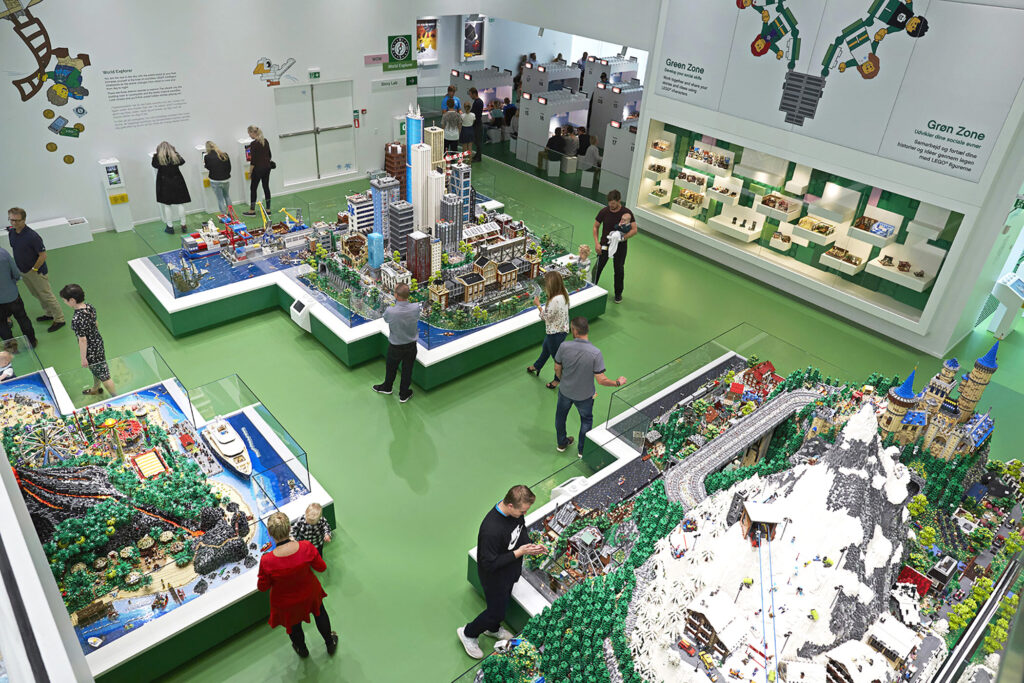
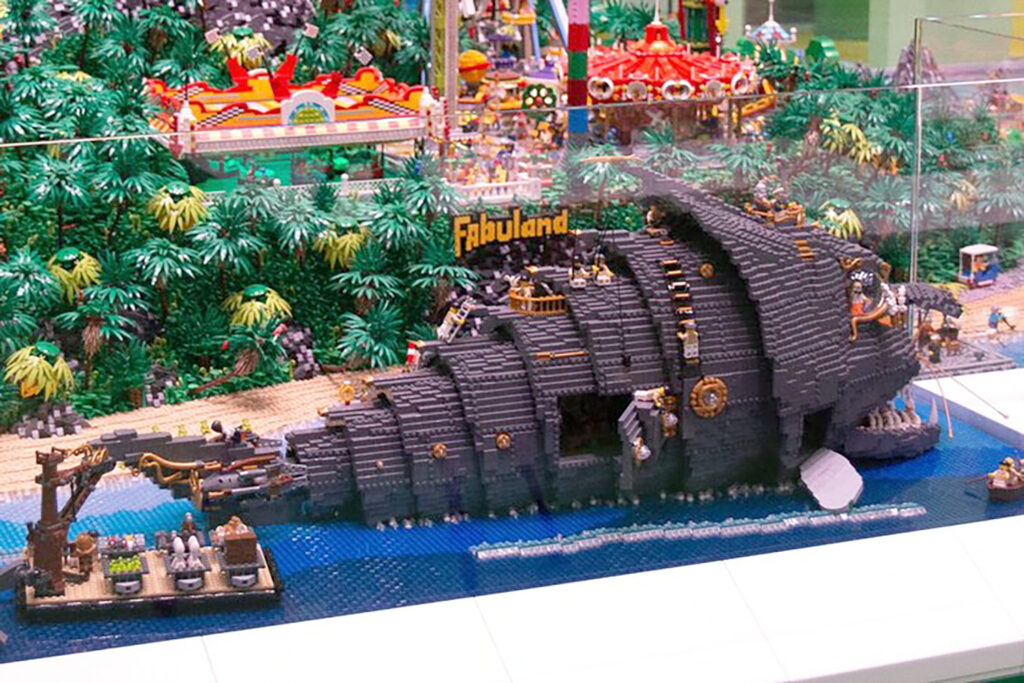
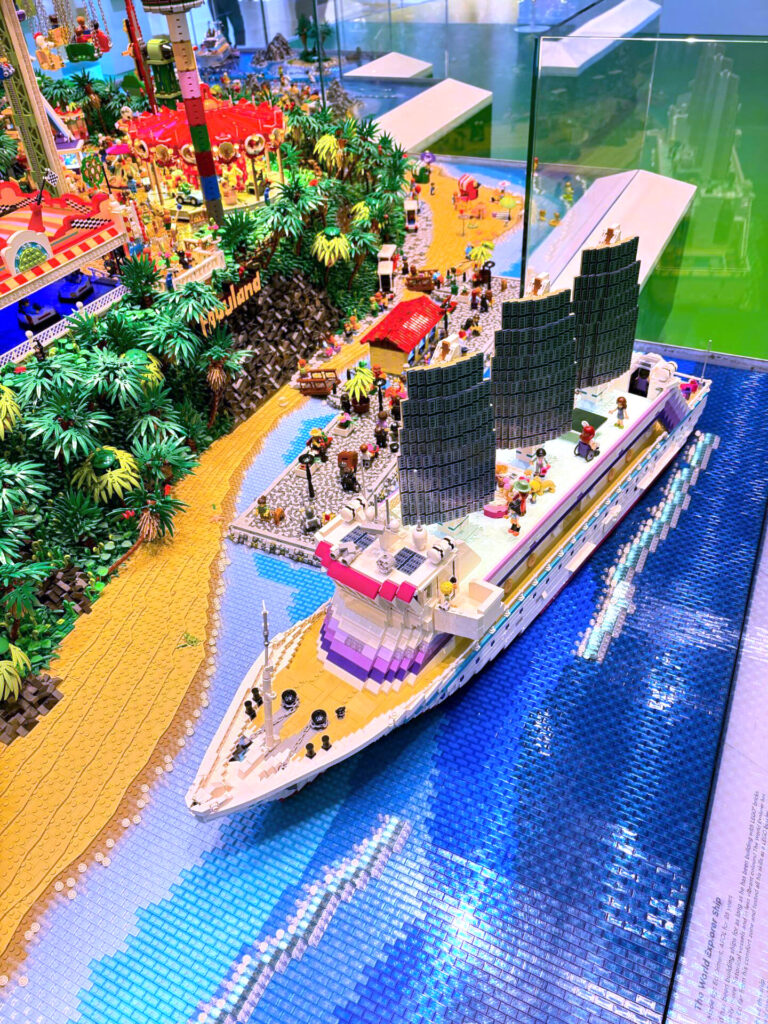
Every year the Lego House change their fan models, adding new artworks to galleries and interactive experiences. The magical World Explorer experience in the Green Zone has a large brick-built island with a Duplo volcano and amusement park called ‘Fabuland’! Visiting the island for 12 months is a custom ship designed by AFOLs (Adult Fan of Lego).
In 2018 Warren Elsmore and his talented team installed their epic ‘Steampunk Submarine’. He has written a fascinating blog about their creative process which involved 3D modelling, LEDs and so many exquisite details!
Before my model there was the very cute, Friends themed ‘The World Explorer Ship’ by Ed Diment. With three impressive solar sails, his ship focused heavily on accessibility and sustainability to inspire the builders of tomorrow.
If you have photos of World Explorer ships from previous years, please do share links to them in the comments section.
1.2) Ship shape?
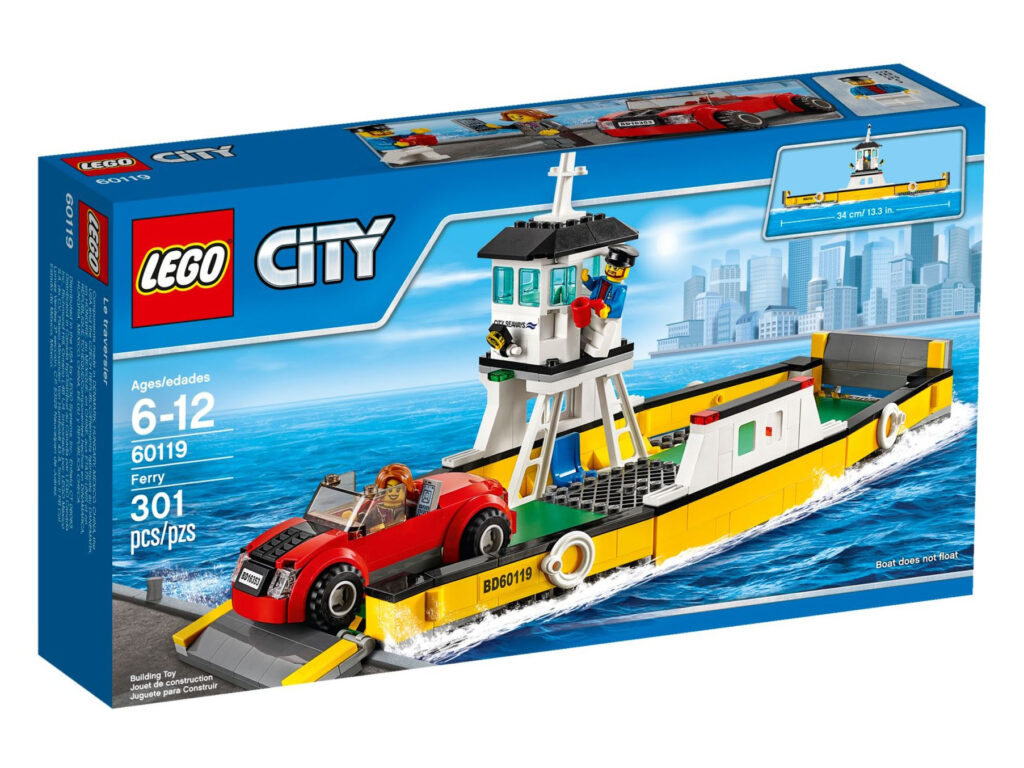
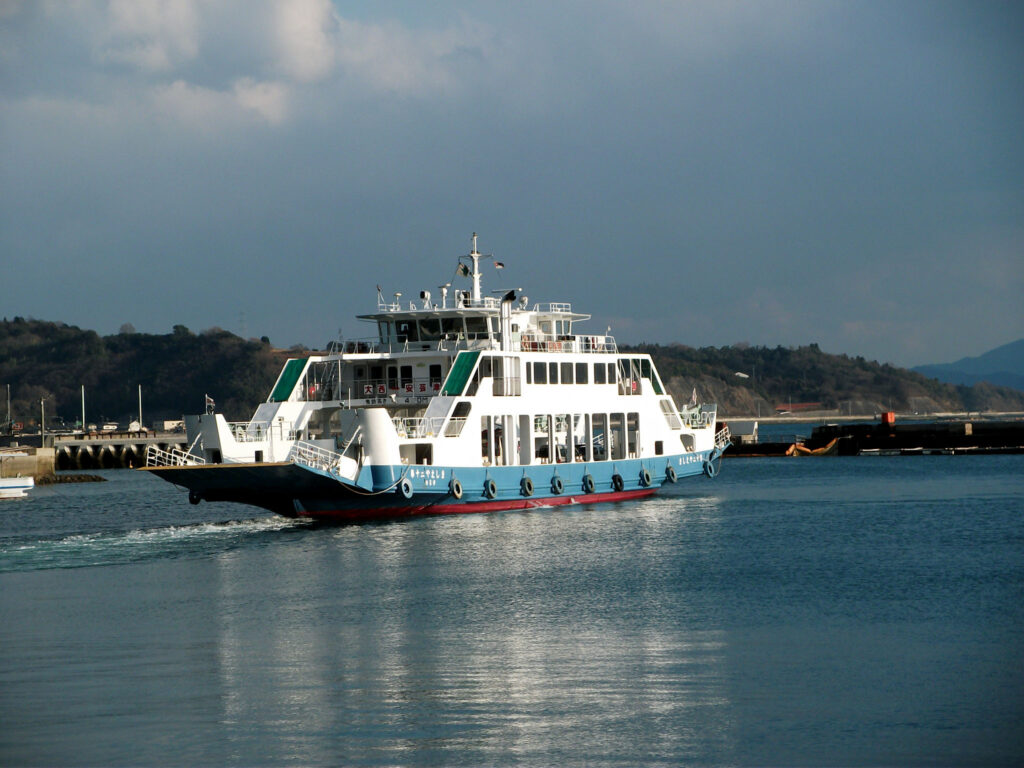
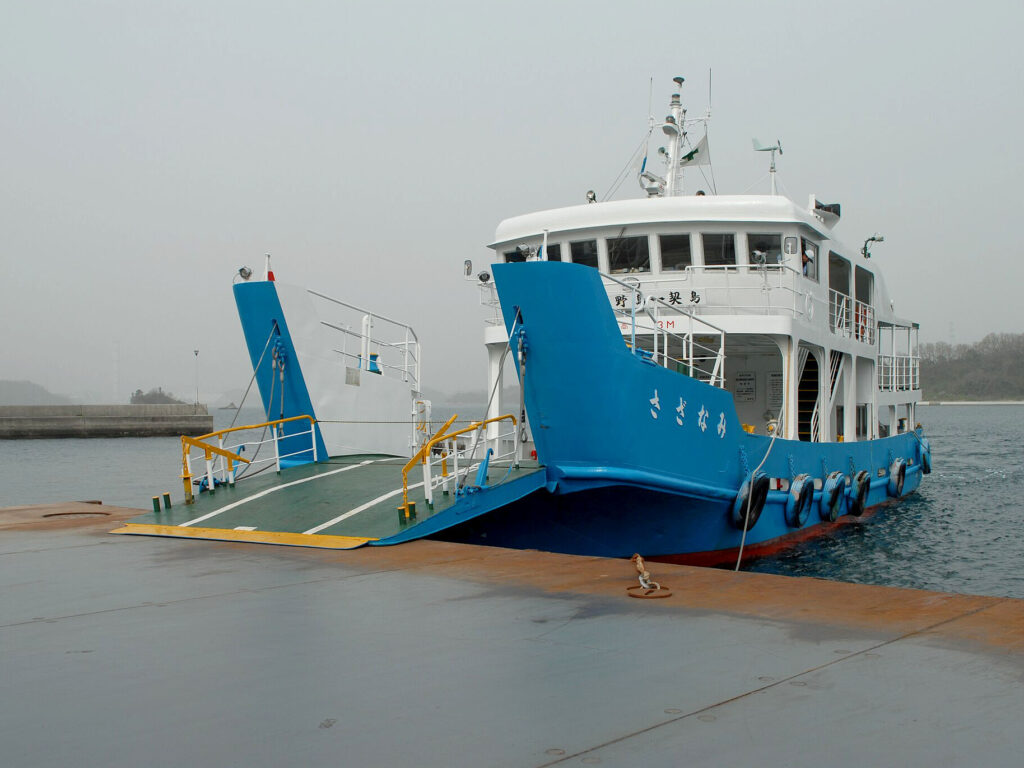
For the first few weeks I toyed between a modern-day ferry and an old-fashioned paddle steamer. My first plan was to include loads of cute Fabuland vehicles and passengers on a car ferry. I felt this option had a lot of exposed building area that could host multiple amusing vignettes.
However, I reflected on what is quintessential Fabuland? And for me it’s a powerful combination of nostalgia and whimsy. Even in theme’s original lifetime (1979-1989) it evoked a bygone era and embraced old-fashioned vehicles and architecture.
It just had to be a paddle steamer!
1.3) Captain Wilfred
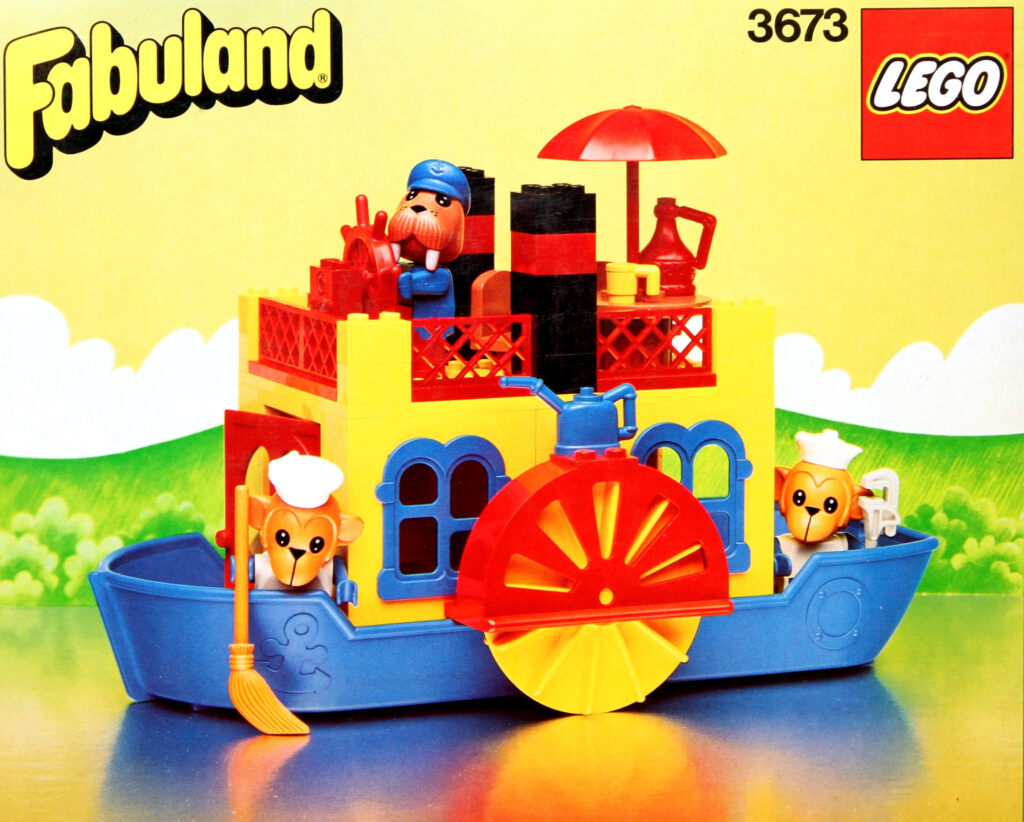
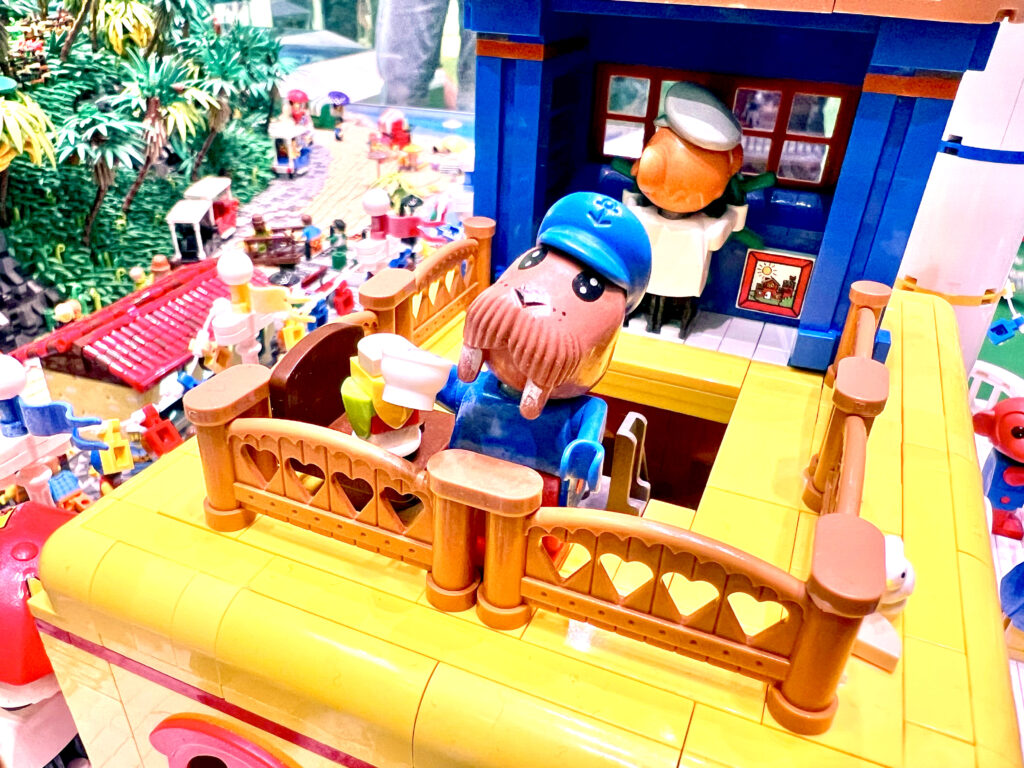
The ‘Maid of Fabuland’ is my homage to the Fabuland set 3673 ‘Paddle Steamer’ from 1985. Wilfred Walrus is once again the captain of the ship. His cheeky monkey sailor friends also make a return appearance.
1.4) Bookworm
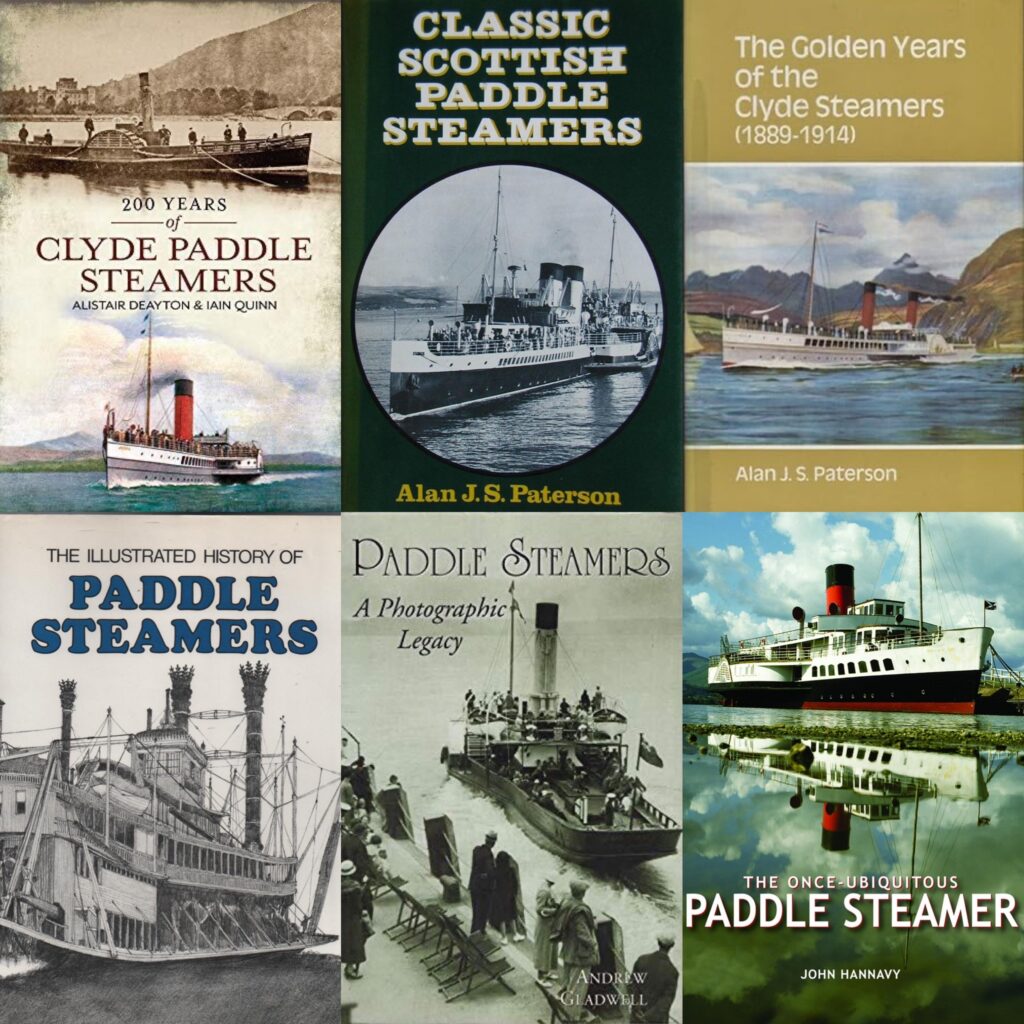
Scotland has a long history of paddle steamers and in 1812 the very first European commercial steamboat service began on the River Clyde between Glasgow and Greenock. This is my tribute to all the beautiful ships that once travelled our seas, rivers and lochs.
I managed to purchase quite a few second-hand books on this unfamiliar subject and most of them had amazing technical blueprints and archive photographs.
Whilst I was keen to design a technically realistic ship, I also wanted to incorporate playful features that younger Lego fans would appreciate. So, I included several seminal children’s books by Richard Scarry in my reading list for potential inspiration.
- Richard Scarry’s Boats by Richard Scarry
- Richard Scarry’s the Great Steamboat Mystery by Richard Scarry
- Best Word Book Ever by Richard Scarry
- The Once-Ubiquitous Paddle Steamer by John Hannavy
- The Golden Years of the Clyde Steamers (1889-1914) by Alan J. S Paterson
- Paddle Steamers: A Photographic Legacy by Andrew Gladwell
- 200 Years of Clyde Paddle Steamers by Iain Quinn
- Classic Scottish Paddle Steamers by Alan J. S Paterson
- The illustrated history of paddle steamers by G. W. & R. Plummer & J. Jobe. Hilton
1.4.1) Busytown?
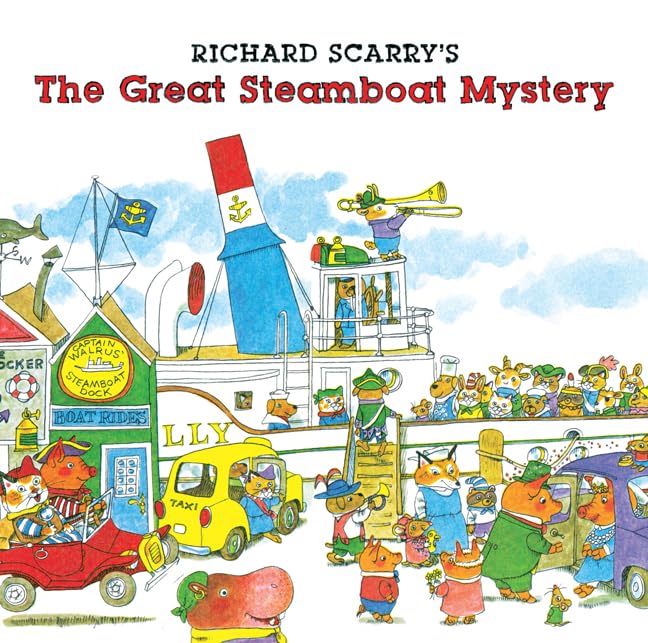
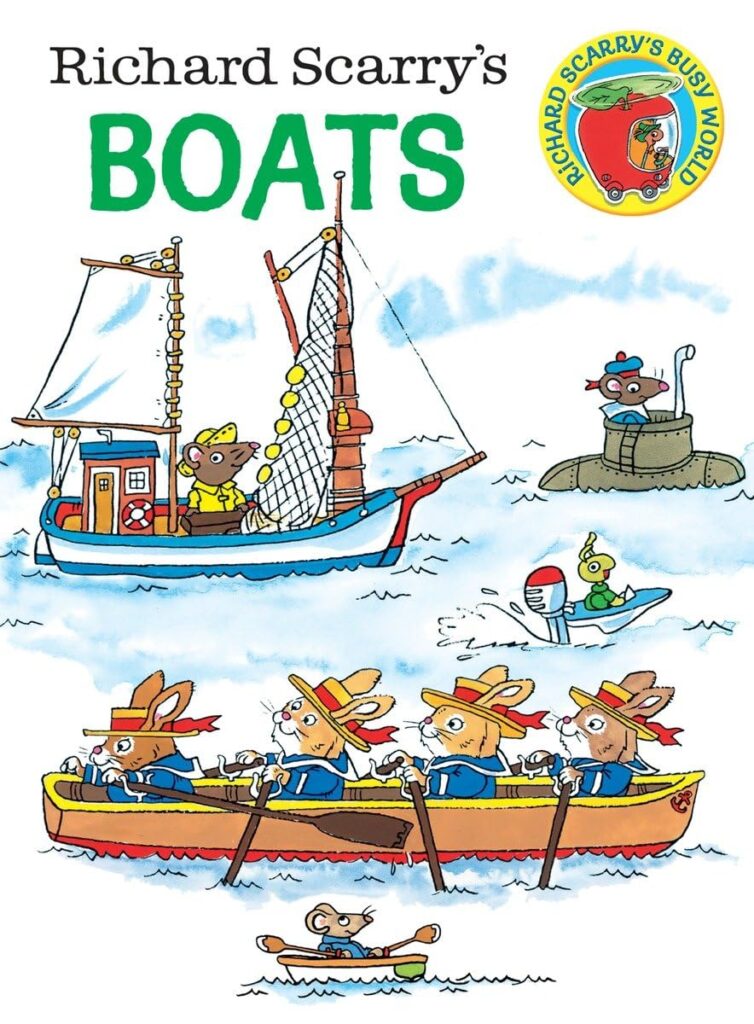
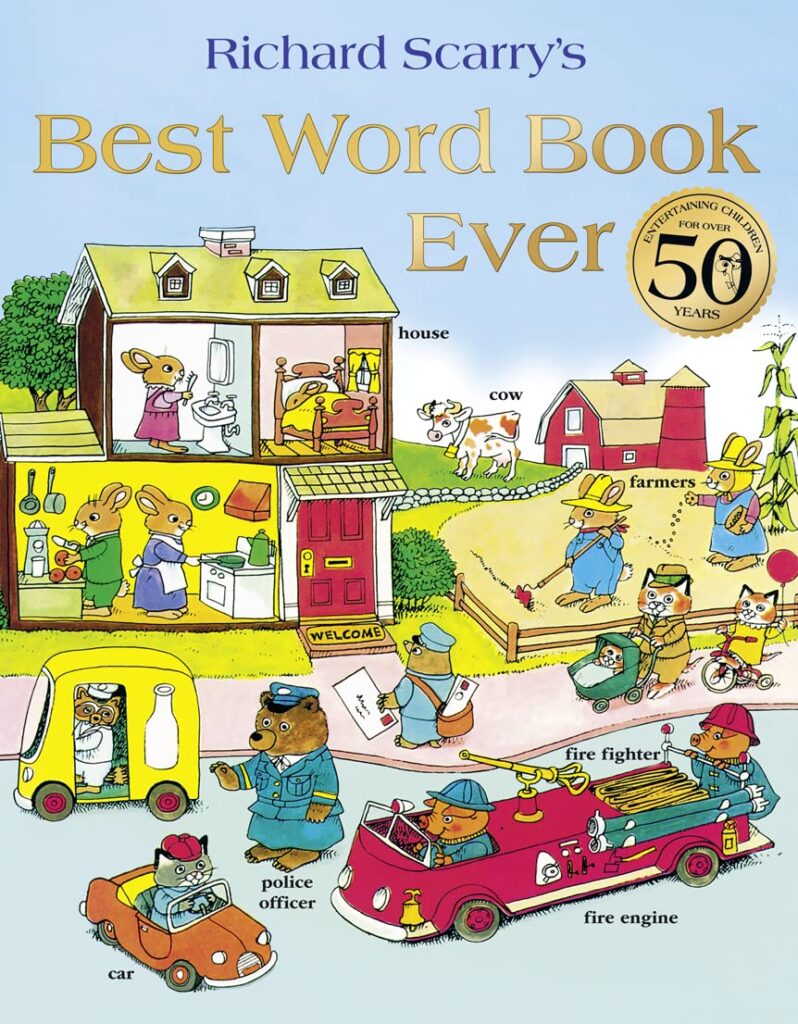
Richard Scarry (1919–1994) was a children’s author and illustrator. He is best known for his ‘Best Ever’ book series that take place primarily in the fictional town of Busytown.
Busytown is inhabited by an assortment of anthropomorphic animals, including Huckle Cat, Lowly Worm, Mr. Frumble, police Sergeant Murphy, Mr. Fixit, Bananas Gorilla and Hilda Hippo.
First published in 1963, I would consider it the obvious precursor to both Lego’s Fabuland (1979-1989) and Nintendo’s Animal Crossing (2001-present).
Busytown (Wikipedia article)
1.4.2) Tiny text
One key issue was being unable to read the small text size, I’m so used to increasing the font size on my phone to 235%, but this text was too small even for my physical magnification aids.
Thankfully my brother is an avid reader and has better eyesight than me, so he was tasked with reading through this collection and making notes for me.
The variety of ship designs was quite fascinating, but key features for my list were a rear paddle wheel (stern-wheeler), passenger deck on the top-level, cargo at the front (bow) and two iconic chimneys (smokestacks) near the captain’s cabin.
1.5) Concept art
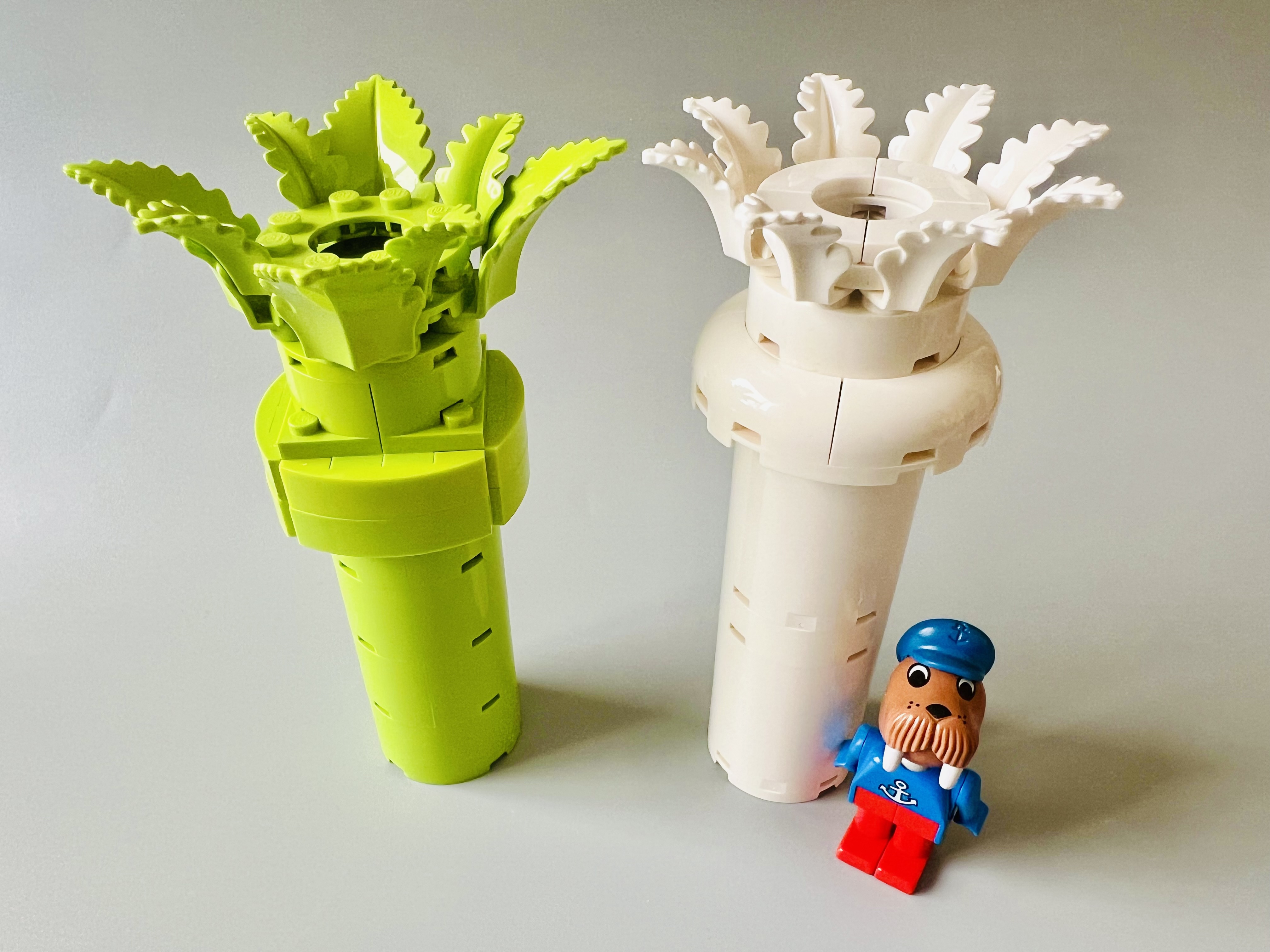
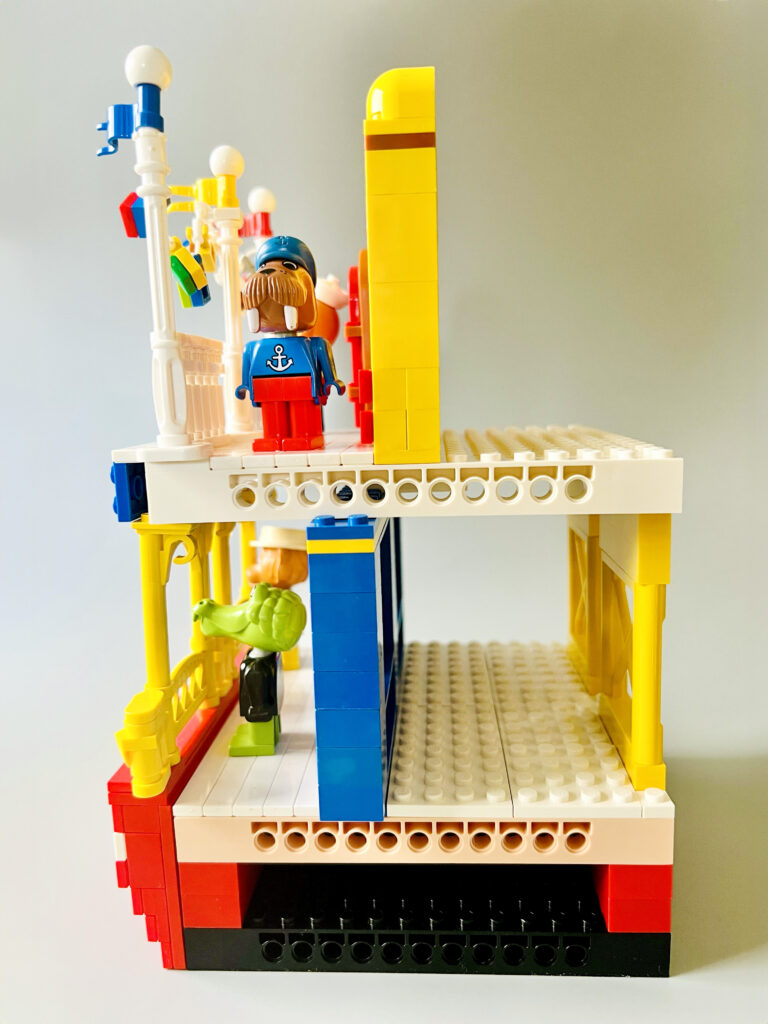
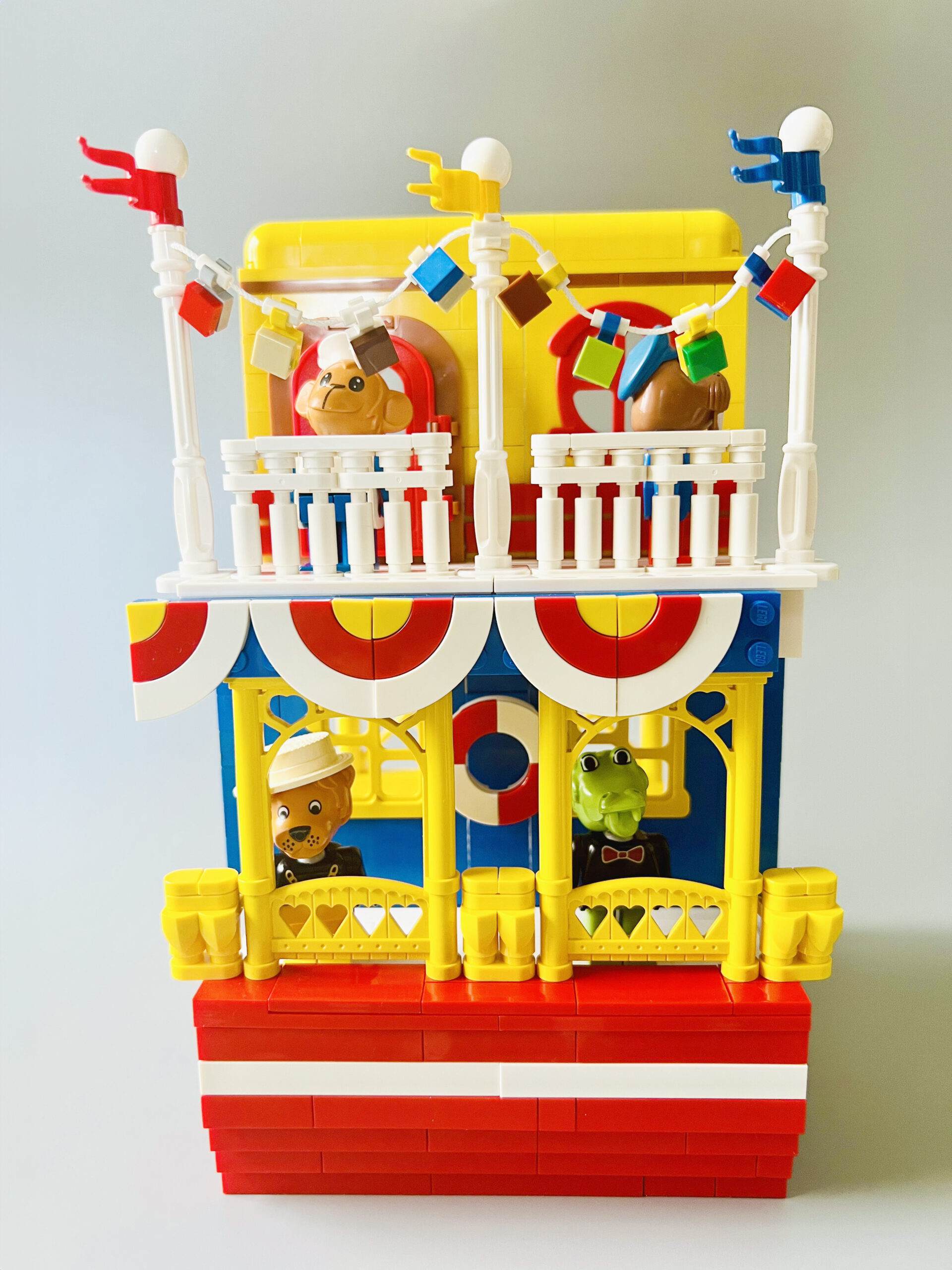
With my research complete, I was keen to start prototyping and try building a few key components of the ship (paddle wheel, deck and smokestack). Stuart had asked me to share as much as I wanted with them, and sending some early sketches seemed a prudent thing to do.
1.5.1) Colour palette
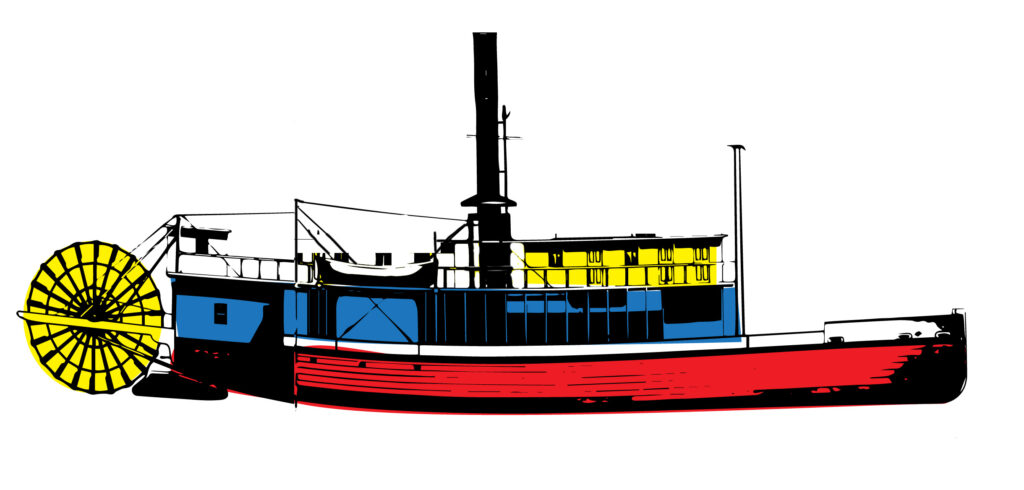
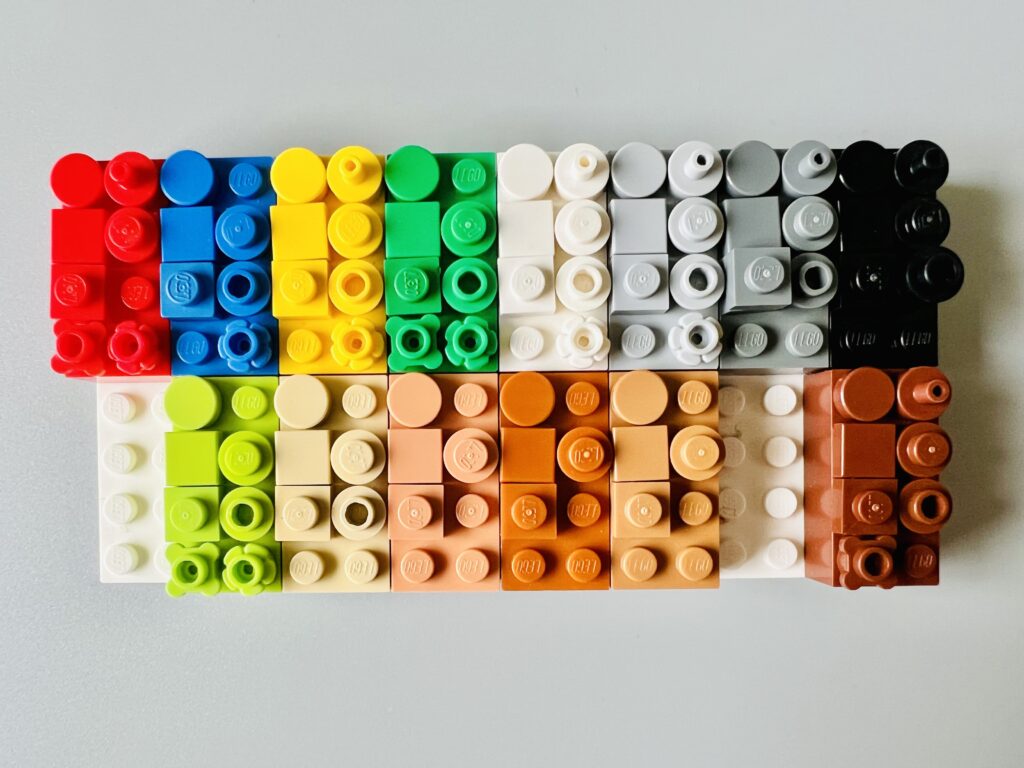
The predominant colour palette is red, yellow and blue (see colour-coded ship sketch), with white and dark orange accents. However, the intention is to use all 14 Lego colours I consider typically Fabuland that are still in production today (see brick swatch photo).
I knew the final model would be installed on an existing blue surface, so I chose red for the hull to provide a strong contrast. And I had more blue Fabuland wall panels than yellow, so the bigger first deck is blue and yellow for the smaller second deck.
1.5.2) Modularity
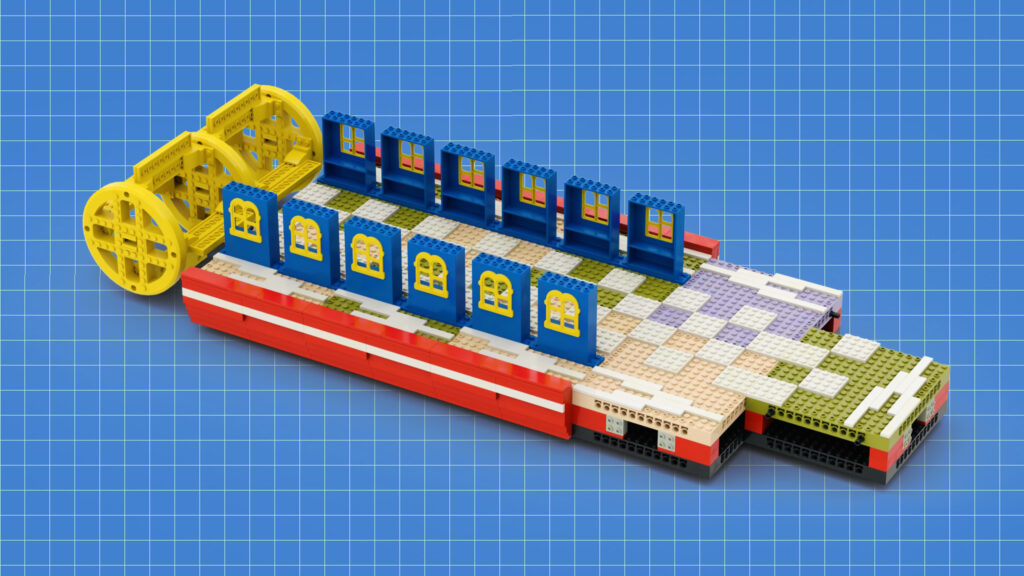
Lessons learned from a previous large model (Fabuland Hangar) were to try and go modular, I had found MILS (Modular integrated Landscaping System) plates incredibly efficient and resilient. My footprint was obviously narrower than 32×32 modules, but I could reuse the same principles.
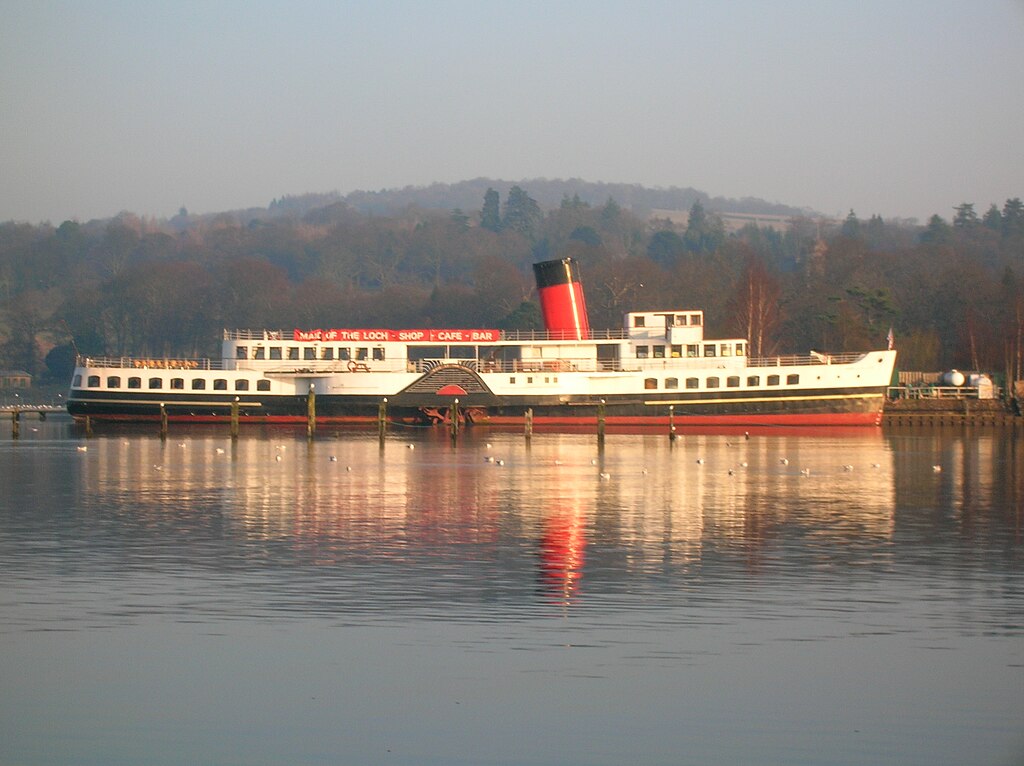
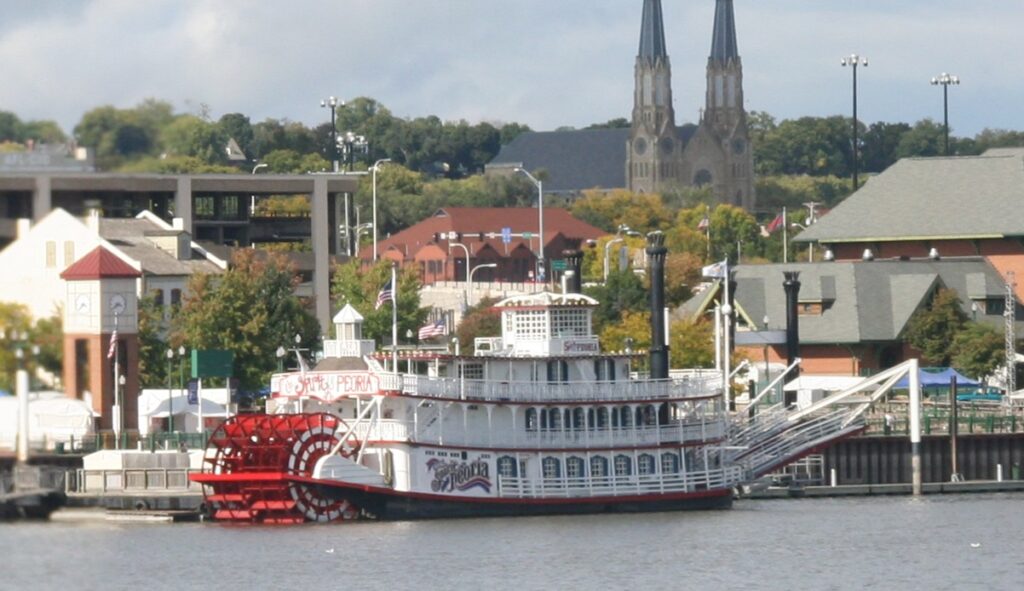
My ship design was effectively eight 16×16 modules (4 long x 2 wide) for the hull and one centred for the bow, so nine in total. Keeping the scale realistic was a key goal for me, I wanted it to be recognisable and believable. The height was the biggest restriction, and with tall smokestacks I only had room for two decks. Whilst most Lego models have the iconic USA three decks, it seemed more common in Scotland and Europe to have a more modest two.
After sharing these preliminary images with the Lego House team and getting a positive response, I was happy to start building the entire ship in earnest.
2) Build process
2.1) Paddle wheel
The stern wheel with 12 paddle blades was probably the hardest bit for me to engineer. You might have spotted that I used six Fabuland Ferris wheels for the main element (part number 4750). I felt the paddle wheel was such a critical component it was worth doing first and building things around that scale.
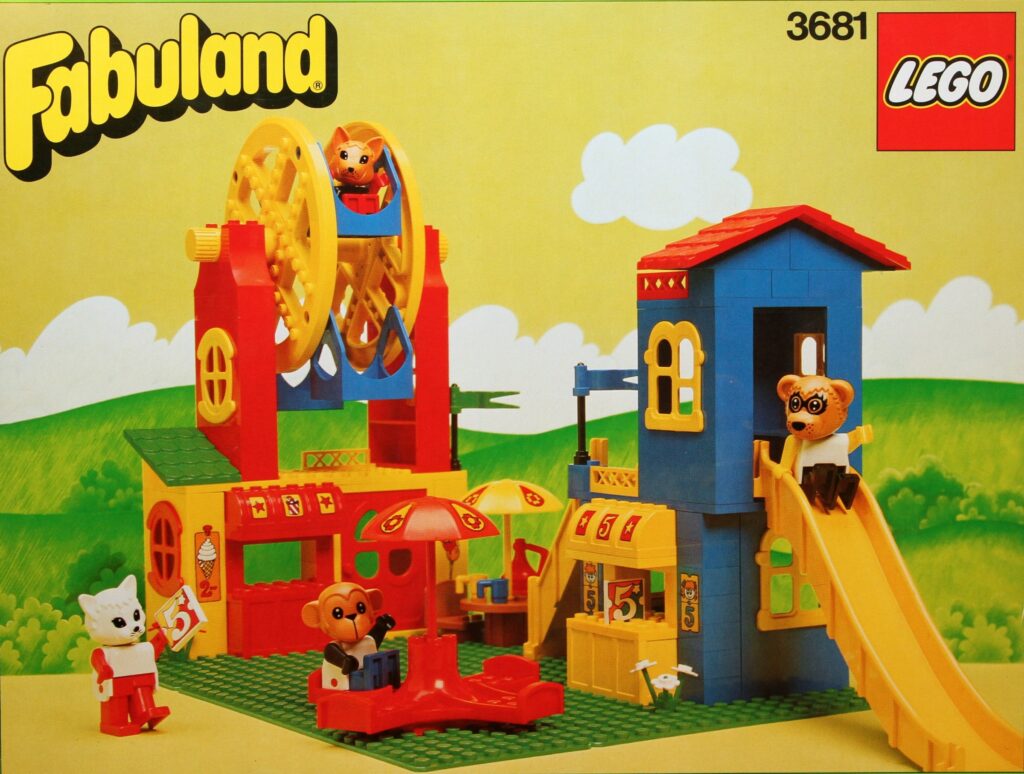
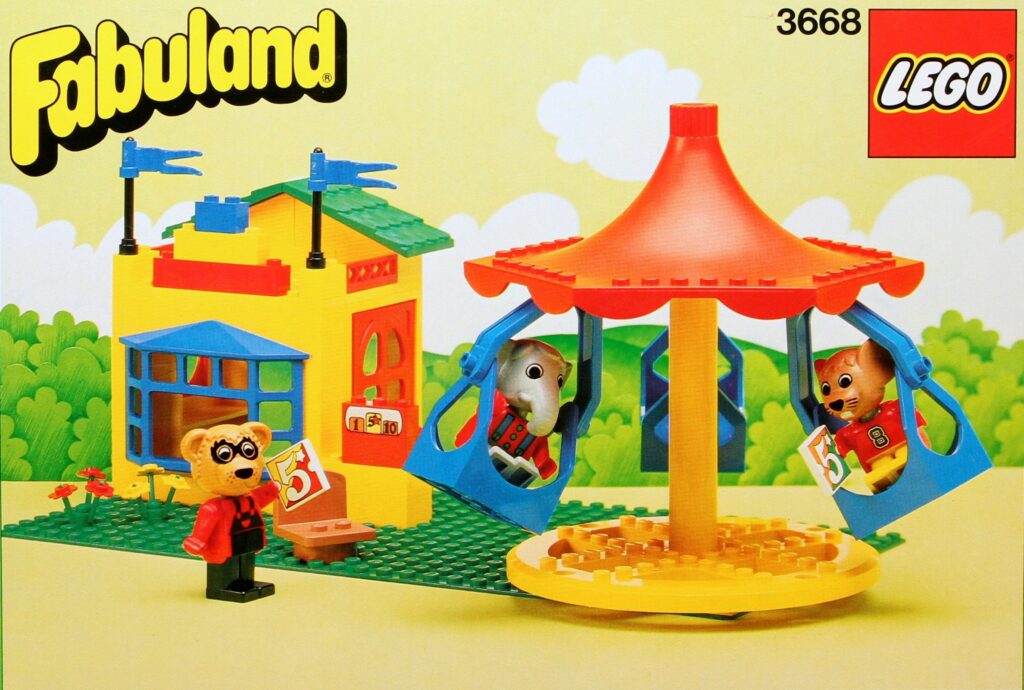
The large yellow Fabuland Ferris wheels were also used for Merry-Go-Round and Carousel sets in the 1980s.
For quite a few weeks the wheel only had eight blades. This seemed acceptable at first, but over time annoyed me more and more. Most paddle wheels have 12 blades, and this discrepancy annoyed me.
2.1.1) Welcome to Apocalypseburg!
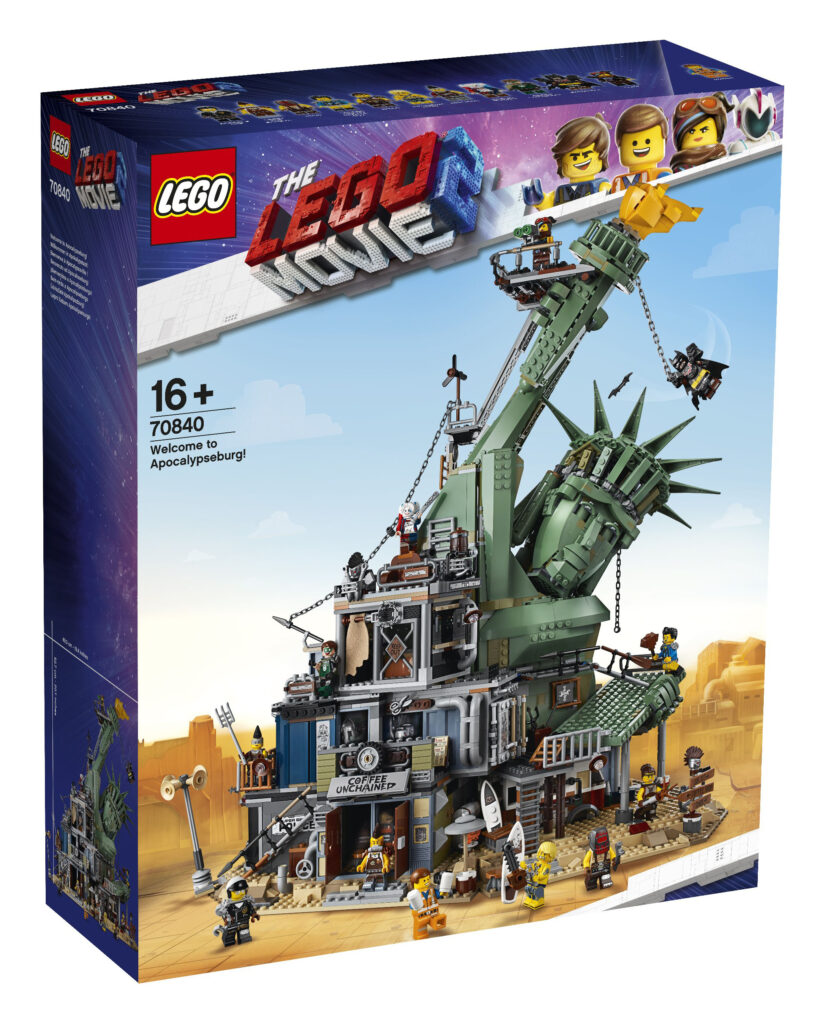
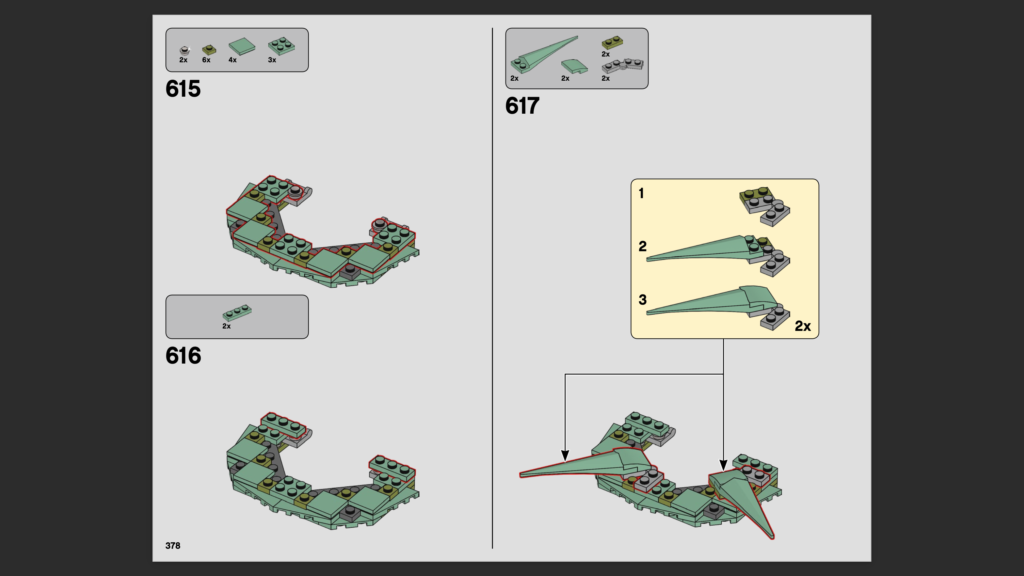
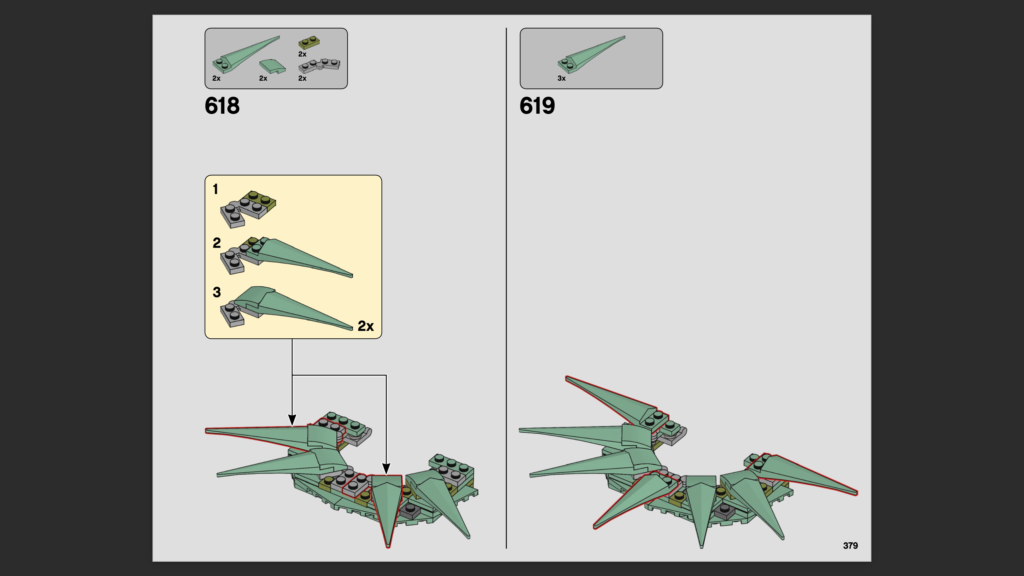
Whilst watching one of my favourite YouTube builders (Brick Buffoon) I spotted something potentially useful. He was building the iconic set 70840 ‘Welcome to Apocalypseburg!’ from 2019.
Welcome to Apocalypseburg – LEGO Set build – Part 5 (16 minute YouTube video)
Around step 615 they were using a combination of hinge plates, tiles and exposed studs to construct the Statue of Liberty crown. Whilst she has only seven points, the angles are the same for 12, namely 30 degrees.
Thankfully all these parts are quite common, and I could adapt my wheel to feature the more historically accurate 12 blades.
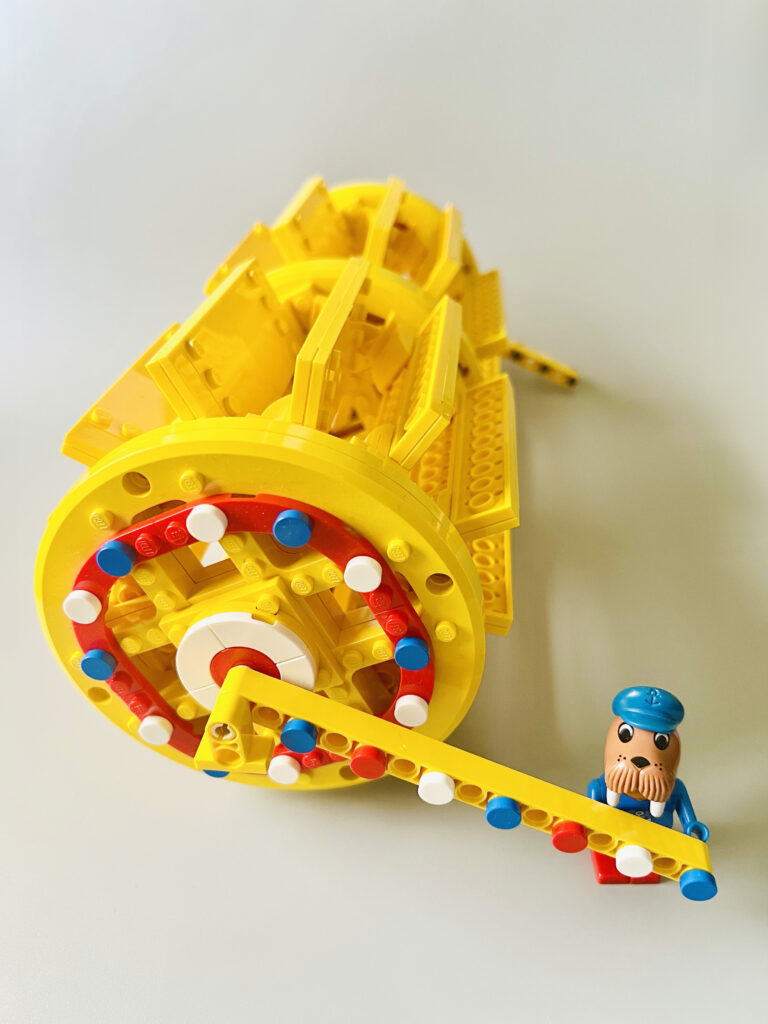
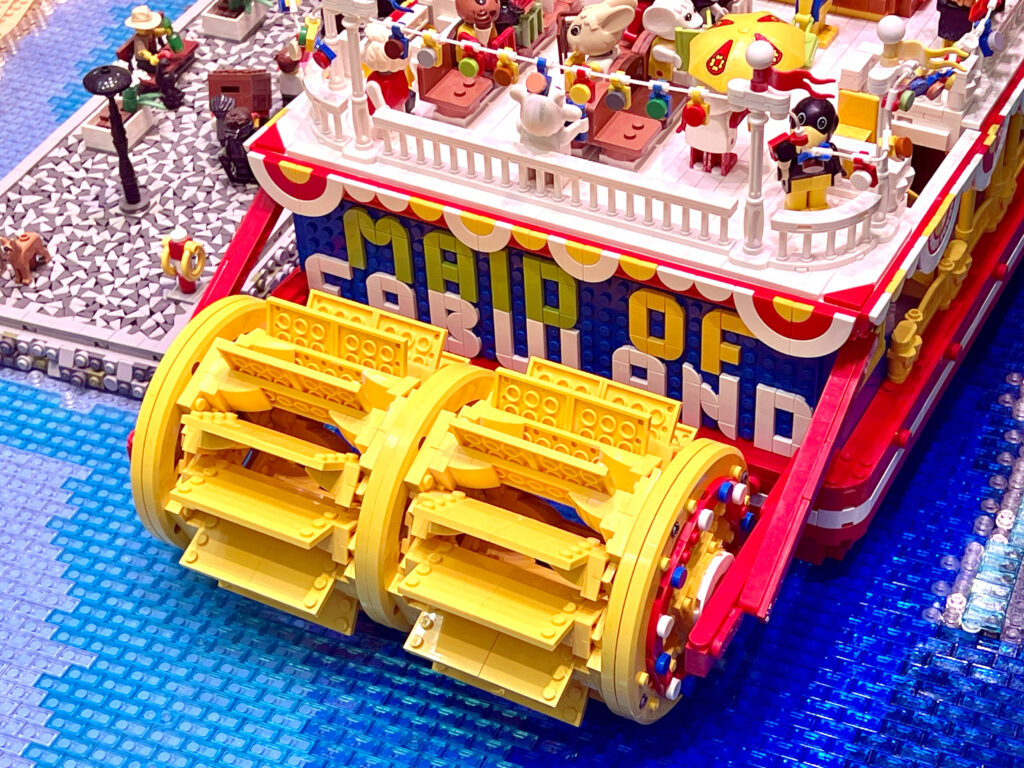
2.2) Accessibility adaptations
Sometimes I know my own limitations and ask for help from others. My mum Margaret helps me sort my collection by colour and then shape. She also gives me encouraging feedback on my progress and design choices.
Other accessibility adaptations I’ve had to make include:
- Superglue with a retardant
- I’d recommend Loctite’s ‘Super Glue Power Gel’ it can be repositioned for up to 60 seconds. This extra time is perfect for me to use a magnifier or correct a mistake due to my poor depth perception.
- Magnifiers with a light:
- Handheld – AAA battery operated and excellent for on-site installations
- Desktop – USB powered, can be mains connected or portable, and can be clamped to a desk.
- Anglepoise – mains connected, but ideal for maximising your workspace and giving you a free hand.
- Room lights
- Additional floor and desk lamps drastically help improve my eyesight. Low lighting is particularly challenging for me and these lamps allow me to work after sunset.
2.3) Braille Bricks
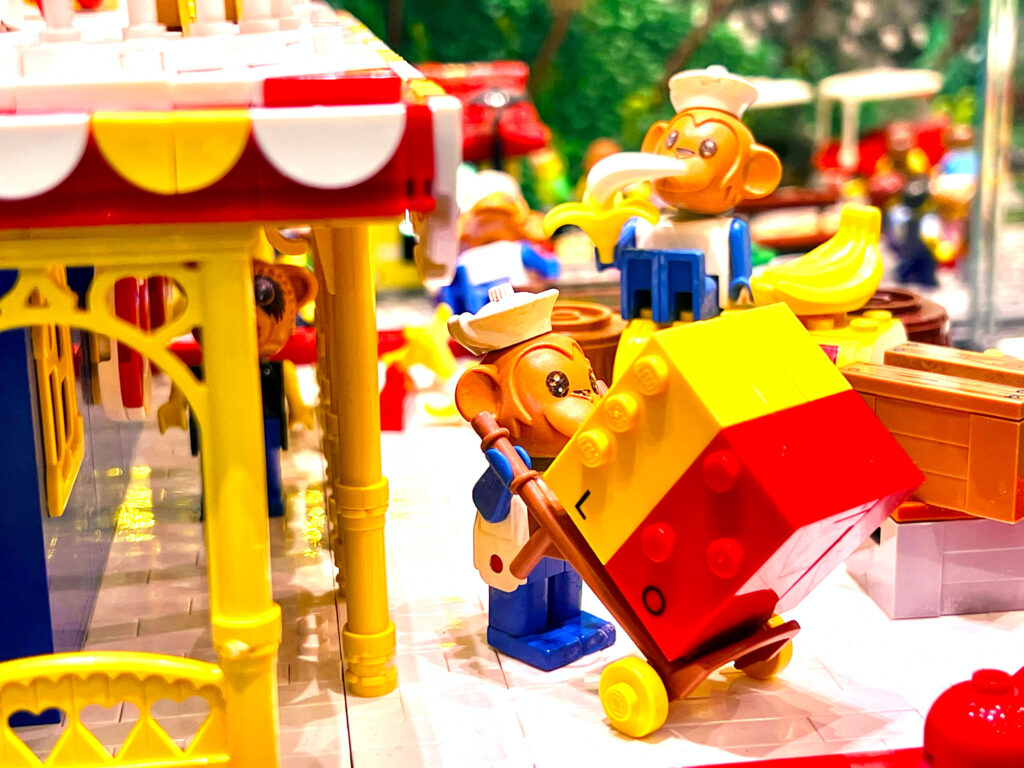
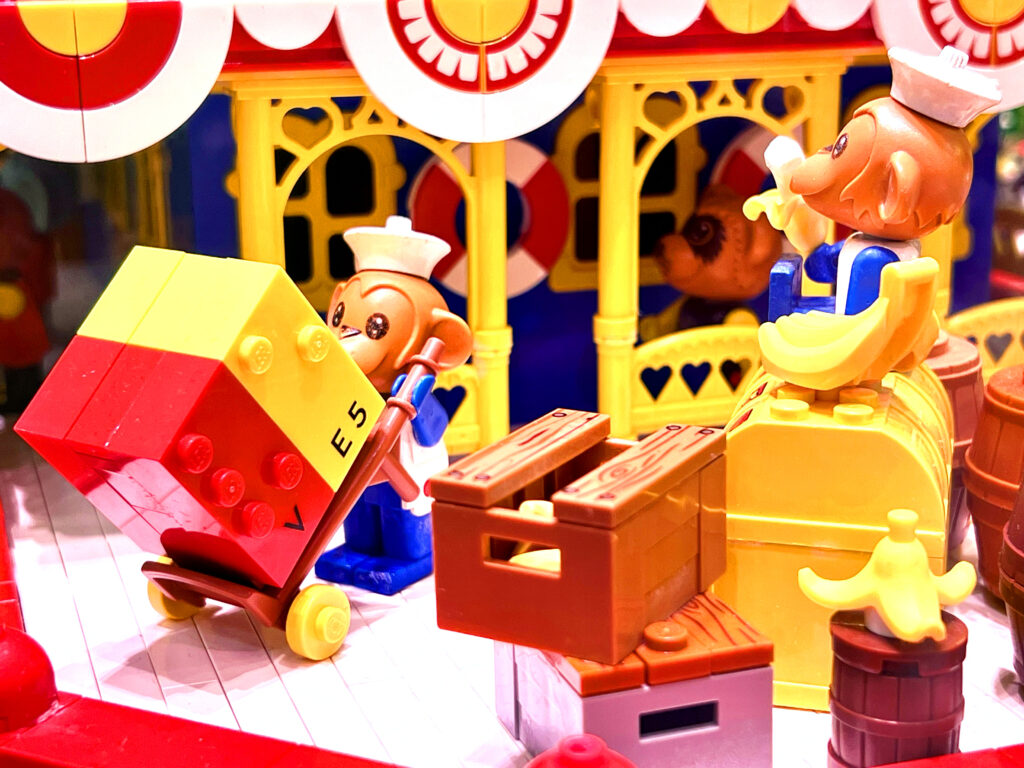
Raising awareness of invisible disabilities is something I’m very passionate about. And in previous models I’ve started to incorporate Lego Braille Bricks.
Braille Bricks (29 February 2024)
Not only do they perfectly symbolise my sight loss journey in Lego form, but they are also helpful for starting conversations with people about my story.
They can also be a fun, educational and interactive prop. I often encourage children at shows to try using them.
This model incorporates four different Lego Braille bricks. One of the monkey sailors is carrying bricks that spell out the word LOVE. My hope is this ship delivers love to everyone who visits the Lego House.
2.3.1) Inclusive signage
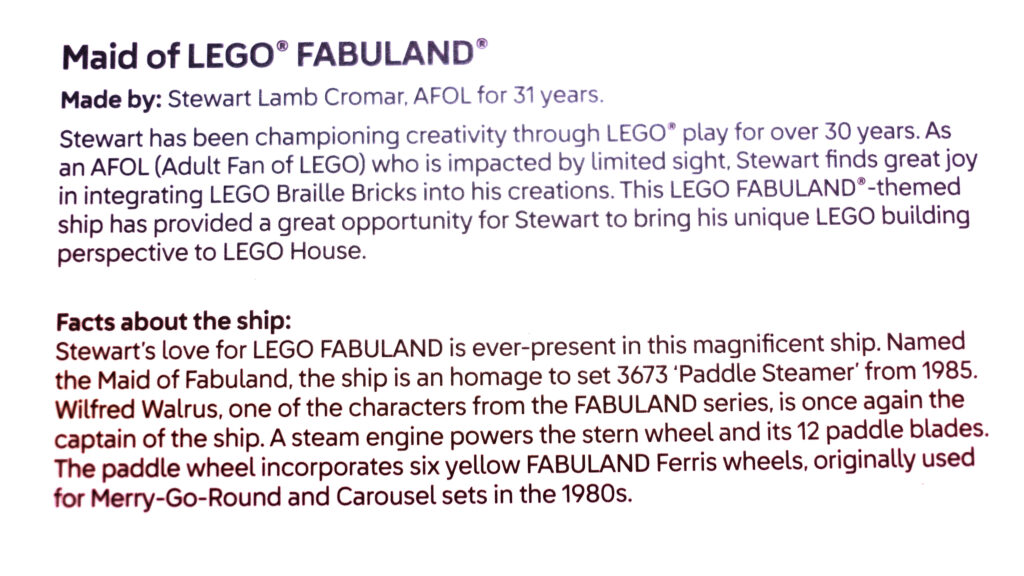
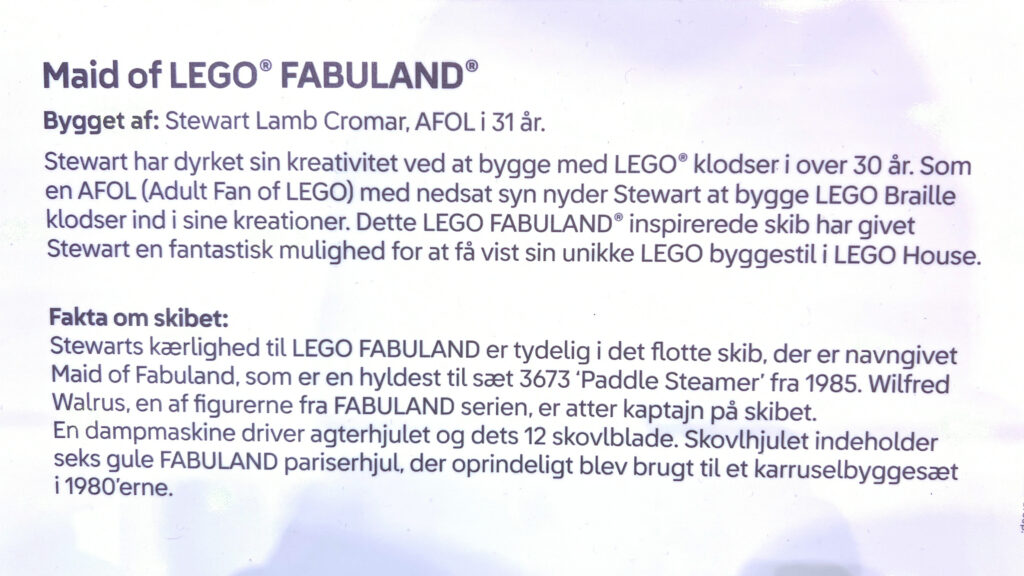
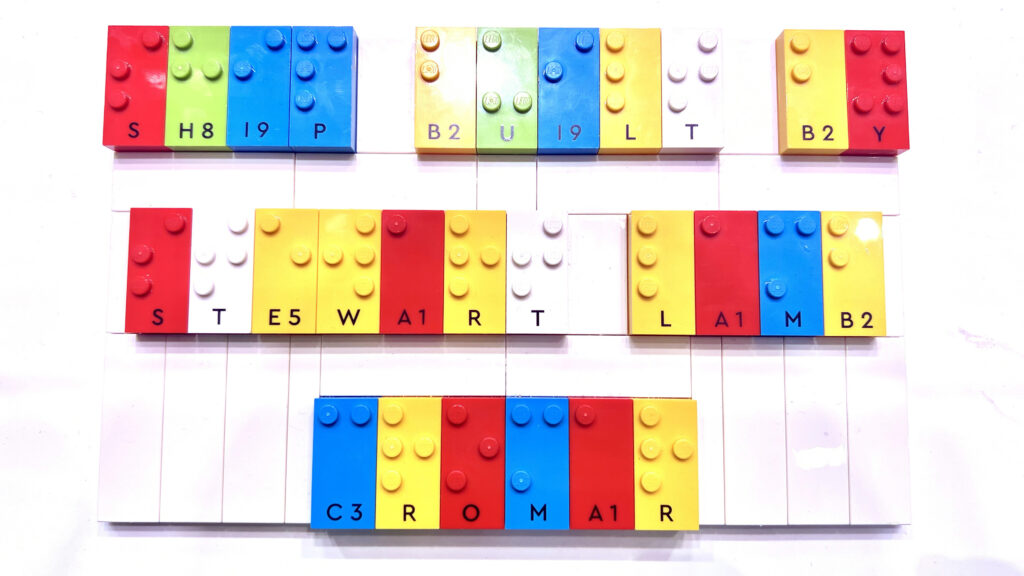
Halfway through the process, I was asked by the Lego House team to contribute some interesting facts about me and my model that would go on a printed sign next it.
I was keen to be very open and honest about my disability, so I asked about the possibility of including a version of the same sign in Braille too.
Thankfully they were very supportive, but as it hadn’t been done before they obviously had to make enquiries about whether this was feasible. Some parts of the Lego House are already fully inclusive, which is an impressive feat considering how highly interactive the building is.
I’m very pleased to say my model currently has signs written in English, Danish and Lego Braille Bricks. A fourth panel with the full text in traditional Braille should be added shortly.
It made me extremely proud that a wide range of different people could discover facts about my model and hopefully have a richer experience as a result.
2.4) Easter eggs
Here are a few secrets about my model, please skip ahead if you plan to visit the Lego House in person. I’ve now been four times, and each experience has been more magical than the last.
Visit the Lego House (Billund, Denmark)
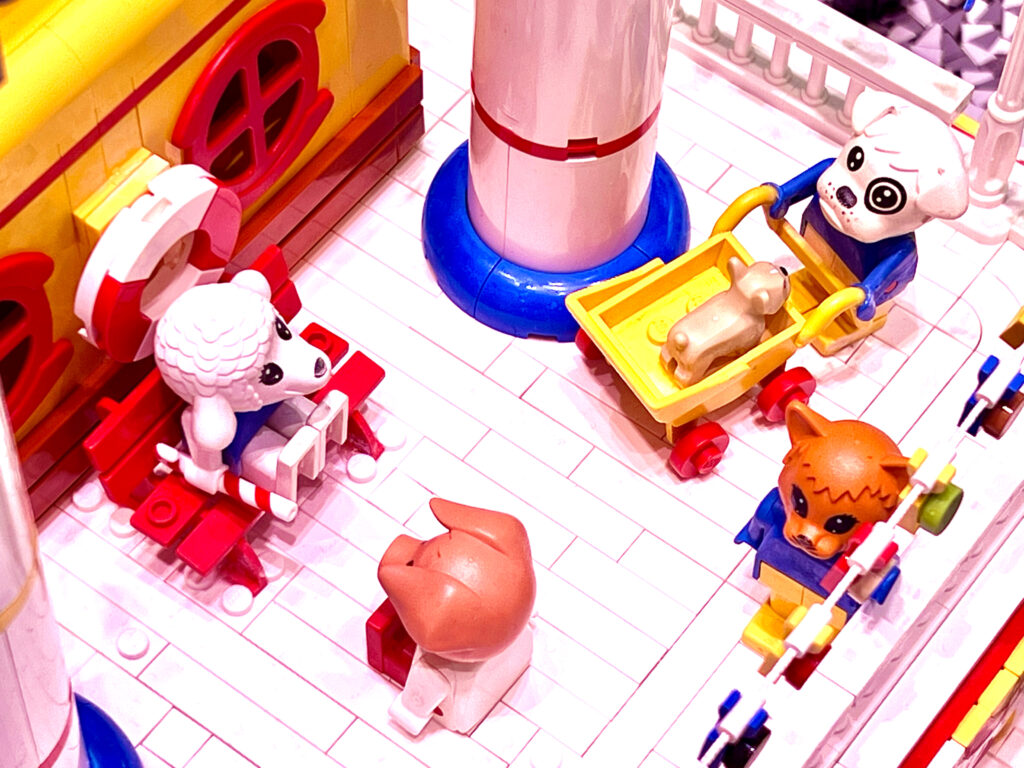
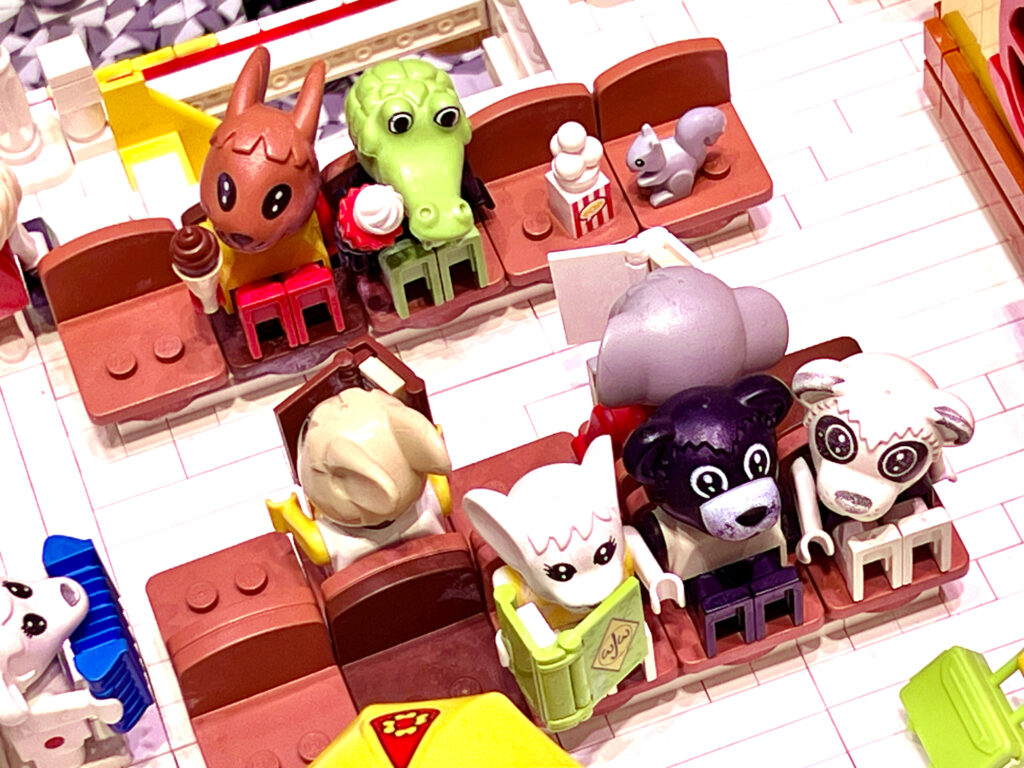
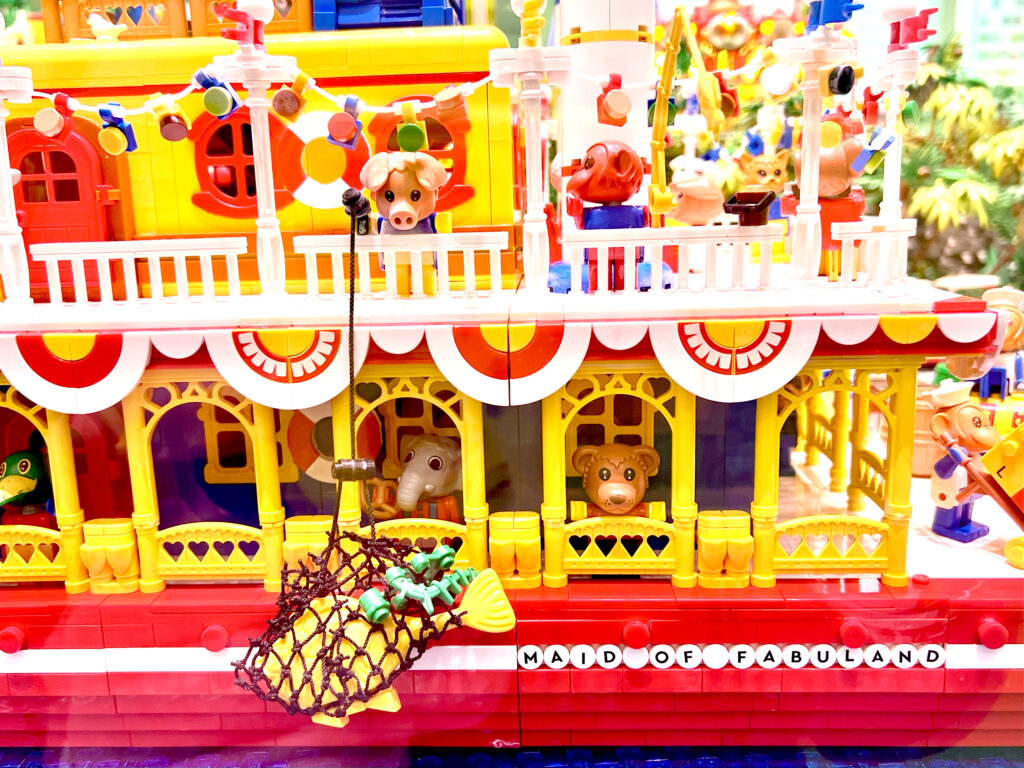
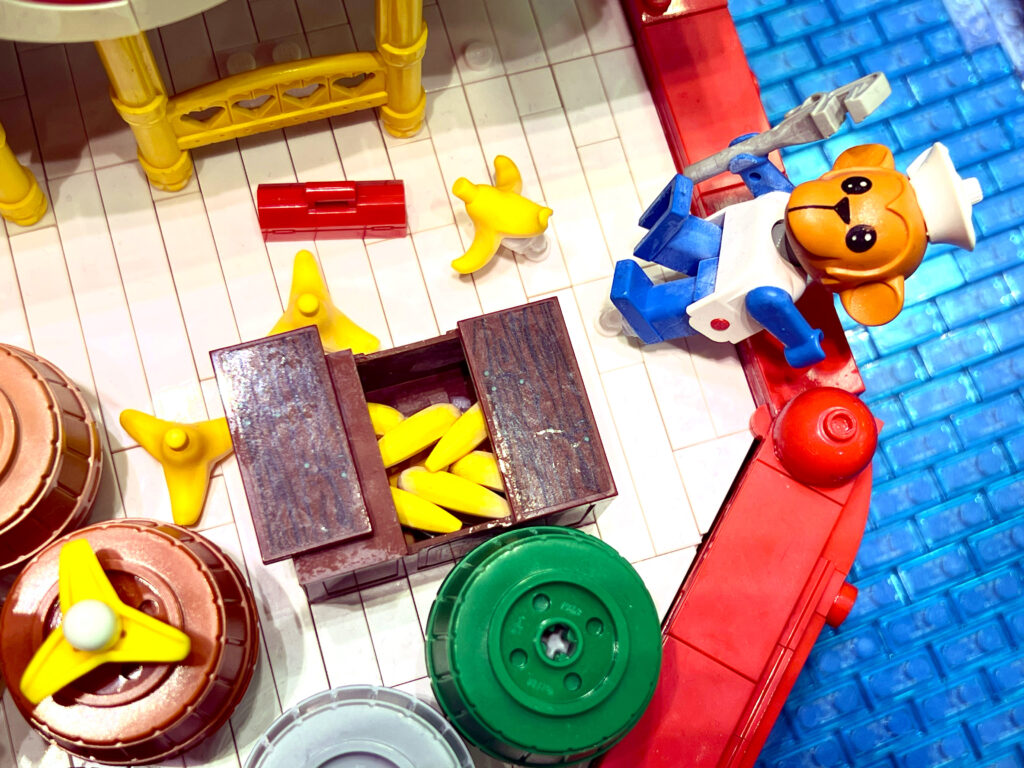
- My middle name is Lamb and I’ve always been given cute little sheep as toys. Fabuland lambs are now my sigfig (signature figure) and there is one sitting down on a red bench chatting to his friend Peter Pig (in universe and IRL).
- The ship name ‘Maid of Fabuland’ is a wee pun, as the model is built from a lot of original Lego Fabuland elements (windows, arches, fences, benches, chairs, Minifigures, Ferris wheels…).
- It is also traditional to consider ships as female, referring to them as ‘she’.
- For example, Maid of the Loch (1953–1981) is the last paddle steamer built in the United Kingdom. She operated on Loch Lomond for 29 years and as of 2022 is being restored near Balloch pier.
- One of the monkey shipmates just loves his bananas and has left a treacherous trail of slippery banana peels. Monkey overboard!
- Romance is blooming for two passengers aboard the ‘Maid of Fabuland’. 36 years after their very first date, Lionel Lion and Hannah Hippopotamus finally have a second date.
- Set 3622 ‘Rowboat’ (1988)
- When I’ve completed a large, or significant, model it’s tradition for me to digitally design some hypothetical retail packaging. For this project I’ve assigned the set number 2692024 to mark one of the happiest days of my life.
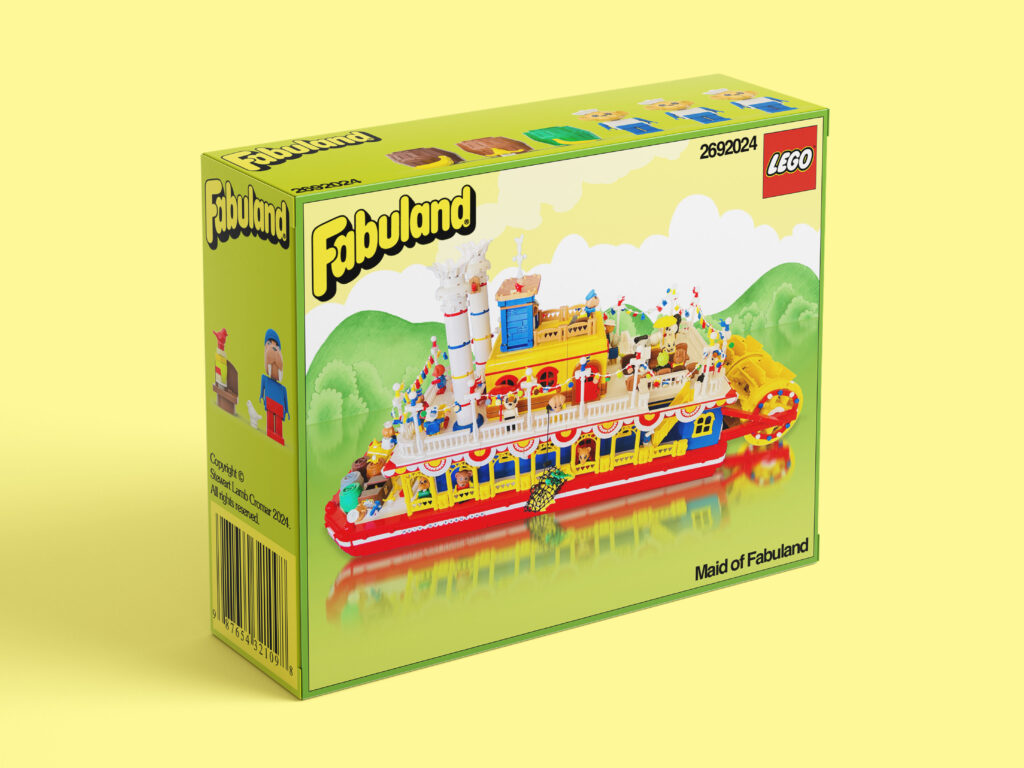
3) Model shipping
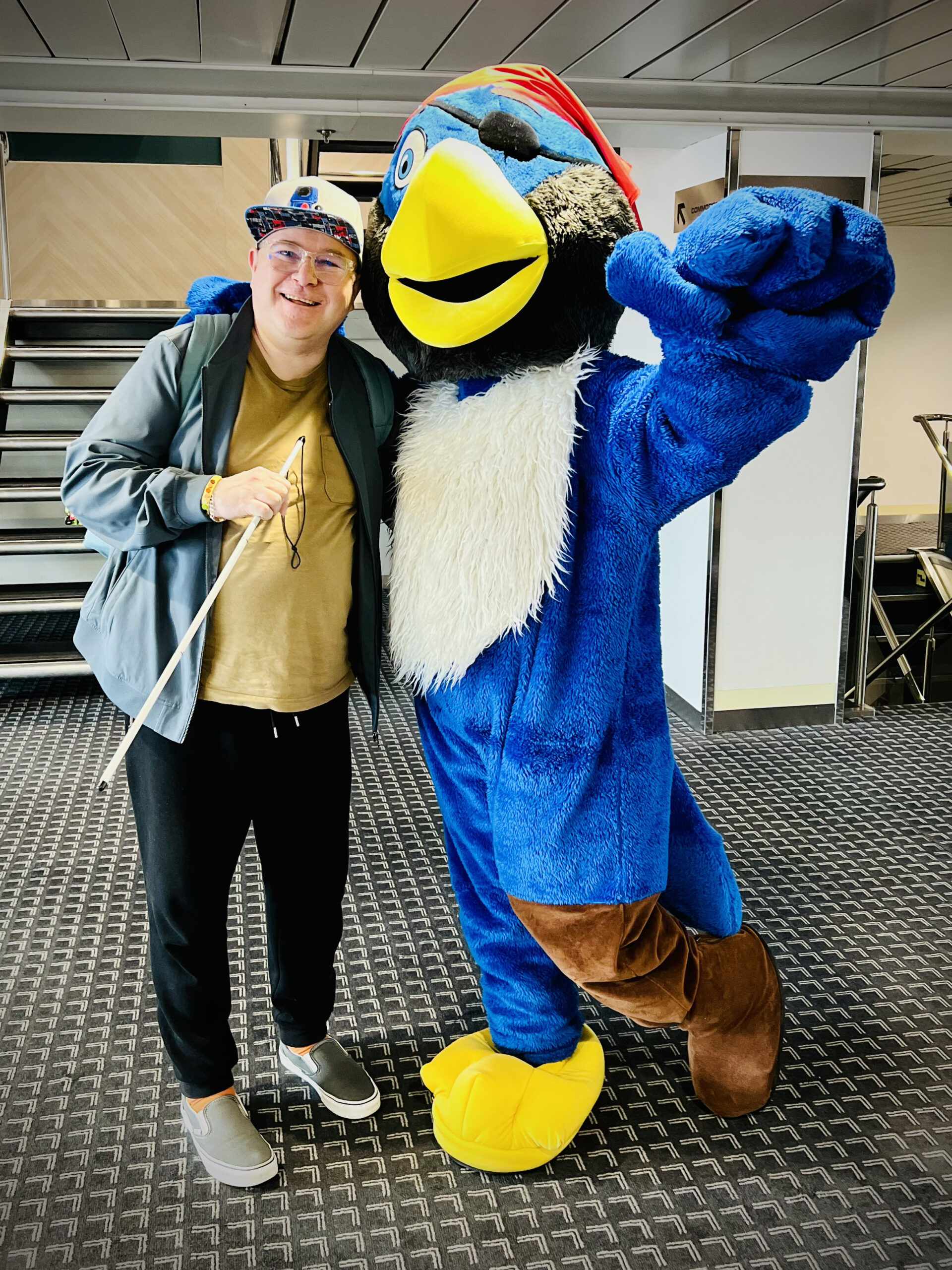
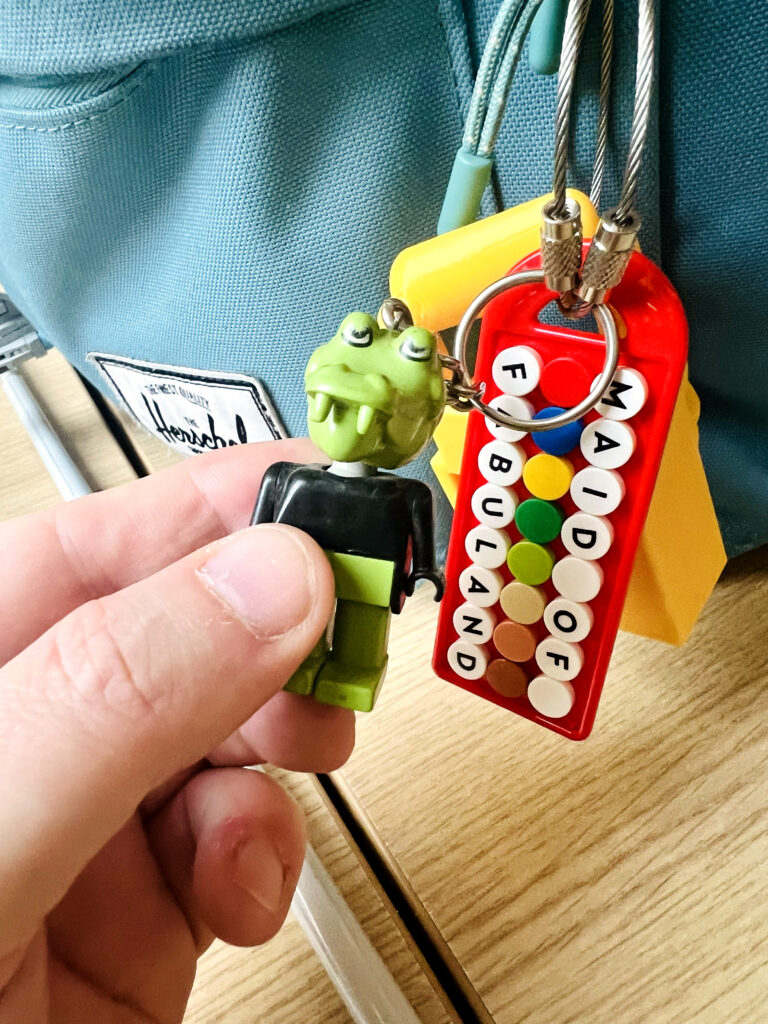

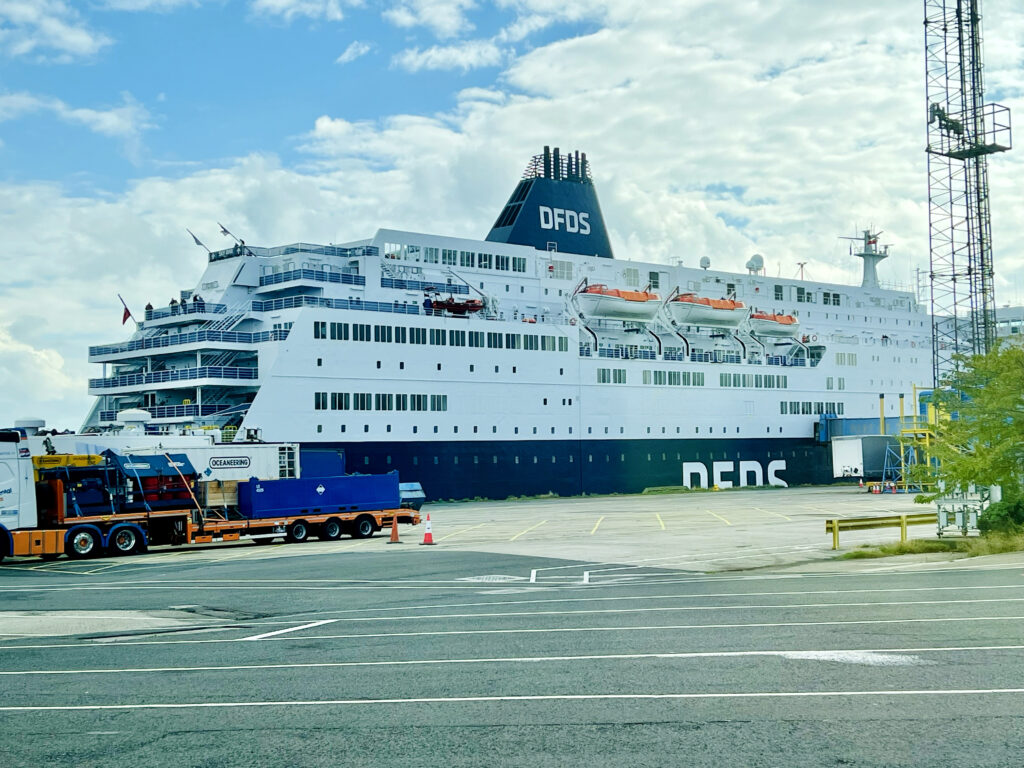
Transporting my model from Scotland to Denmark was no mean feat, but it did involve a lot of fun and memorable adventures.
The model was designed to fit in two standard storage boxes. I like the brand Really Useful Box, and their 35 and 42 litre sizes were a perfect fit. I’d collected bubble wrap all year and this ensured my model didn’t move one iota whilst travelling.
My friends from the Scottish Lego club (Tartan LUG) kindly helped me by driving safely across the Netherlands and Germany. They also accompanied me on my first overnight ferry crossing from Newcastle courtesy of DFDS.
It was only on the ferry, two days before the installation, that I let them in on my wee secret. Up until this point only my mum and brother knew of the commission.
I did have a partial clue for them, by putting the name of my model on a bag tag. Only Kitty spotted this, so she gets a bonus ten points!
4) Installation day
26 September 2024
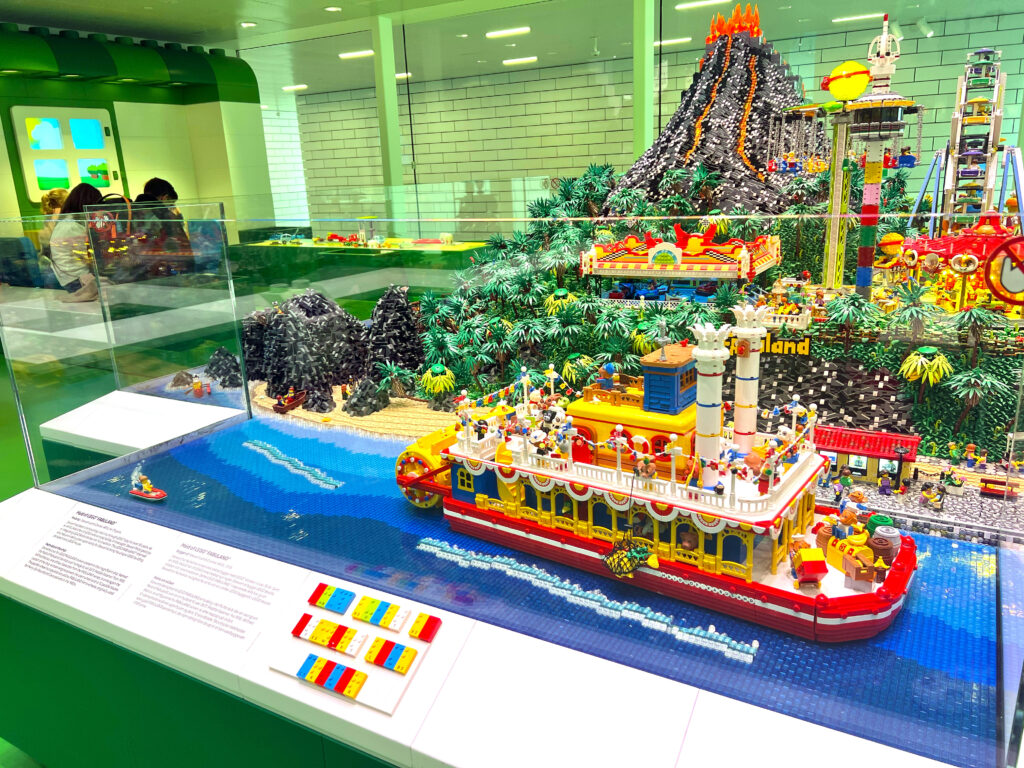
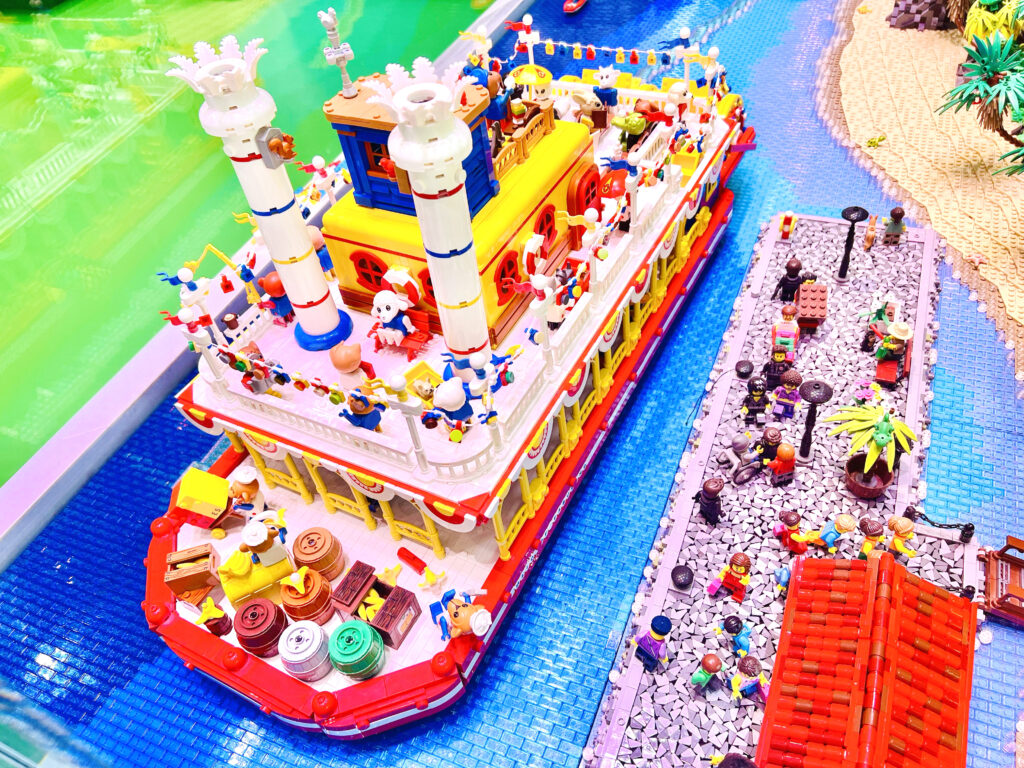
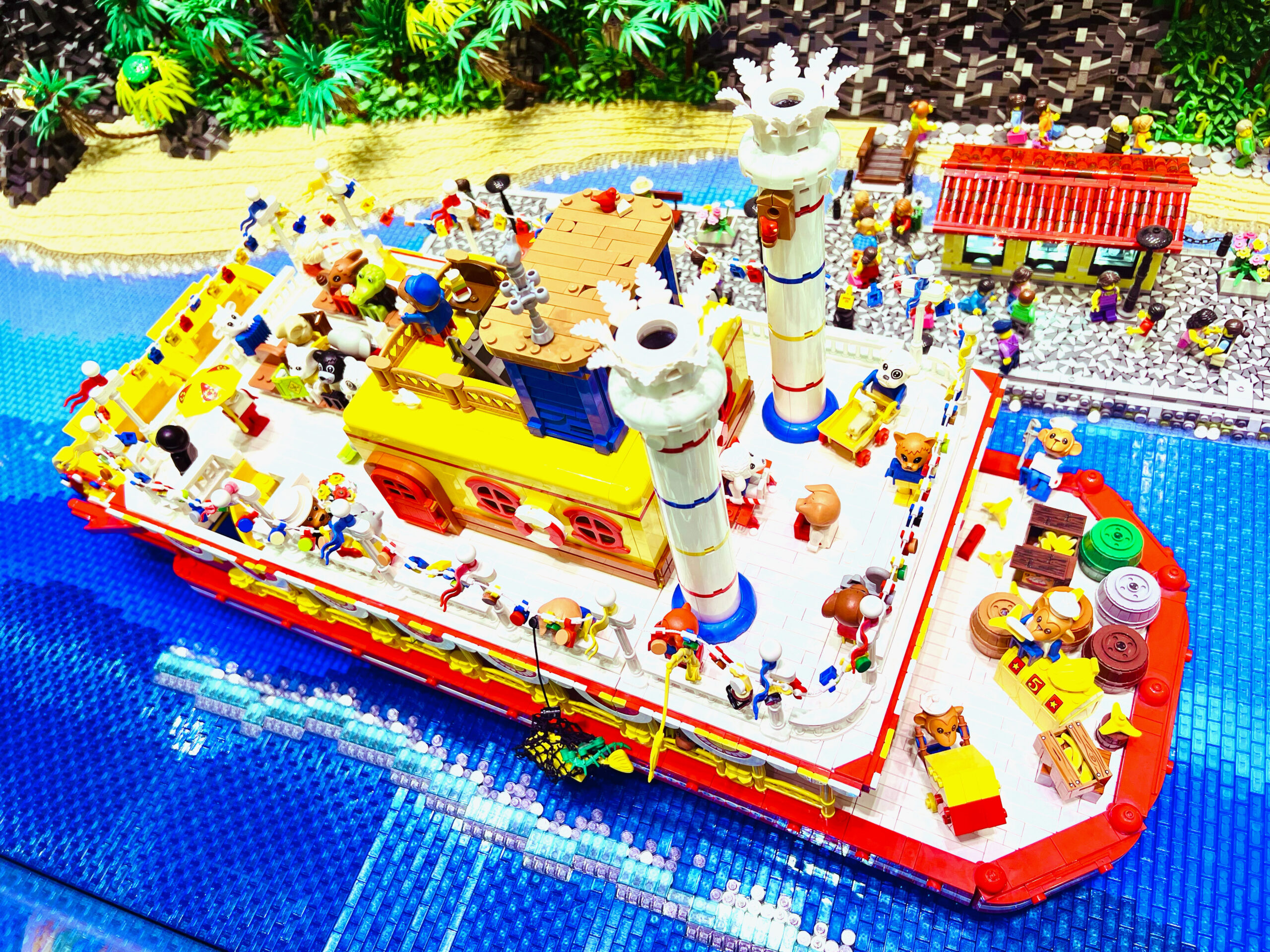
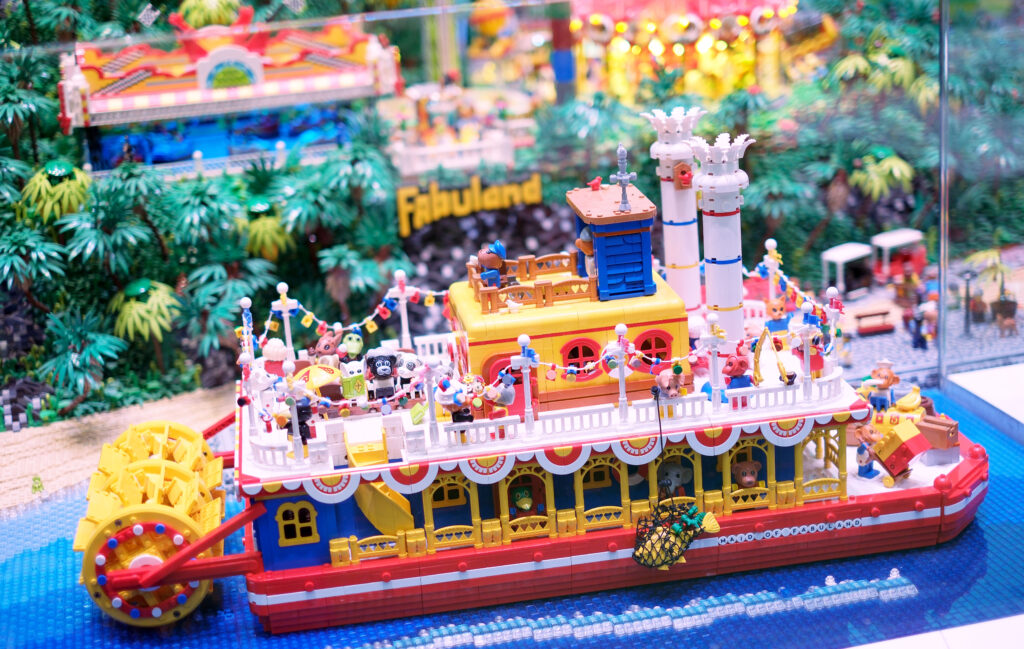
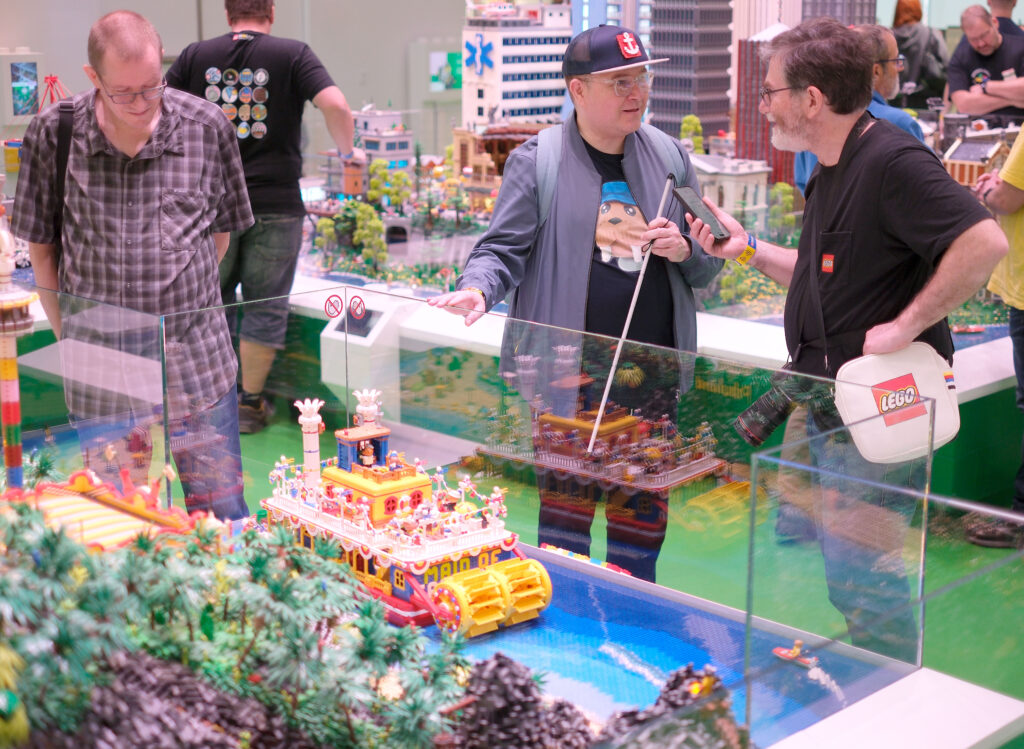
My kind-hearted Tartan LUG chums all agreed to get up at the crack of sparrows to drive from Skaerbaek to Billund for the installation at Lego House.
I was anxious to unbox my model, but thankfully John’s expert driving skills meant only one tiny flag had fallen off. A small dab of glue and everything was shipshape again (apologies).
Everyone from the Lego Group made me feel at ease and fully supported my additional needs related to sight loss. They were so patient and friendly; it felt more like playing Lego bricks with friends!
TikTok promo video
@stub0t Maid of Fabuland Currently on display at #LegoHouse in Denmark. Read about my paddle steamer here – stubot.me (blog link in bio). ❤️💛💙 #Lego #レゴ #Afol #TartanLUG #HomeOfTheBrick #LegoArt #SightLoss #VisionLoss #Braille #NorthernBrickworks #BrailleBricks #LegoBrailleBricks #Fabuland ♬ Loveboat – Kylie Minogue
5) Reflections
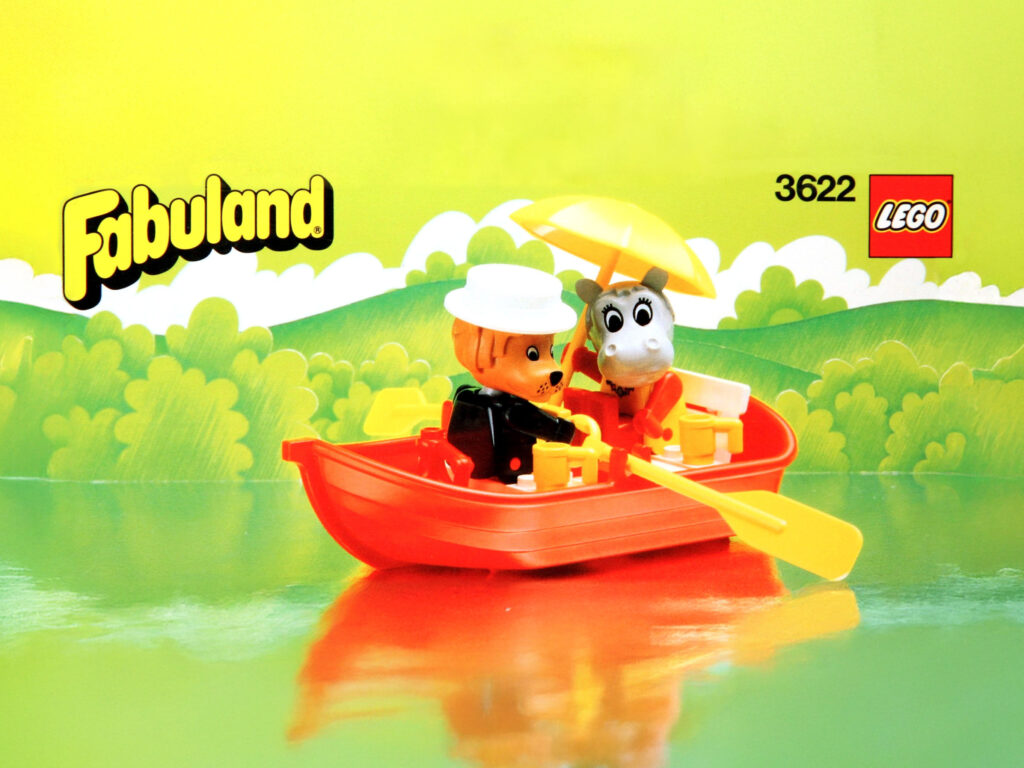
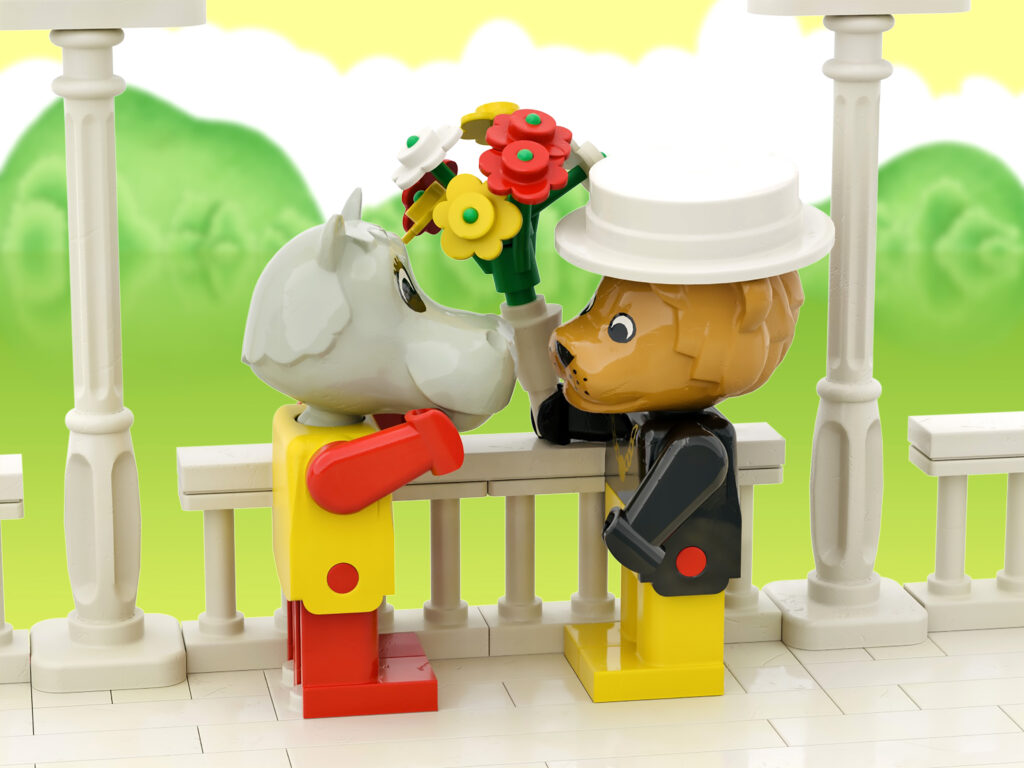
Looking back at this experience, I’m honoured to have been invited to build this ship for the Lego House. It’s not something I say often or easily, but I am so proud of what I achieved.
It was incredibly challenging to design and build this model with my vision loss, but without question I would do it all again in a heartbeat.
Living with sight loss or Diabetes is very taxing, and can cause high levels of anxiety, isolation and depression. But having this goal to work towards, helped me maintain a positive mood and genuine sense of accomplishment.
My time in Denmark was truly some of the happiest days of my life, I haven’t honestly smiled or laughed so much in a long time. Thank you to everyone who contributed towards this very special memory, it’s one I’ll forever cherish.
Love, Stewart
5.1) Support and advice
If any of these topics I’ve mentioned have affected you, I’d recommend contacting a free and confidential support line offered by trained professionals such as Sight Scotland and RNIB (Royal National Institute of Blind People).
6) Thanks and hugs
I will most likely forget to name everyone, but I am particularly grateful for the opportunities and support provided by the following people:
- The Cromar family – Mum and Steven
- The LEGO Group – Stuart Harris, Mike Ganderton, Hasan Jensen, Line Dam Kjær and Erin Perkins
- Tartan LUG – John, Christine, Adam, Warren, Kitty and Peter
7) Image credits
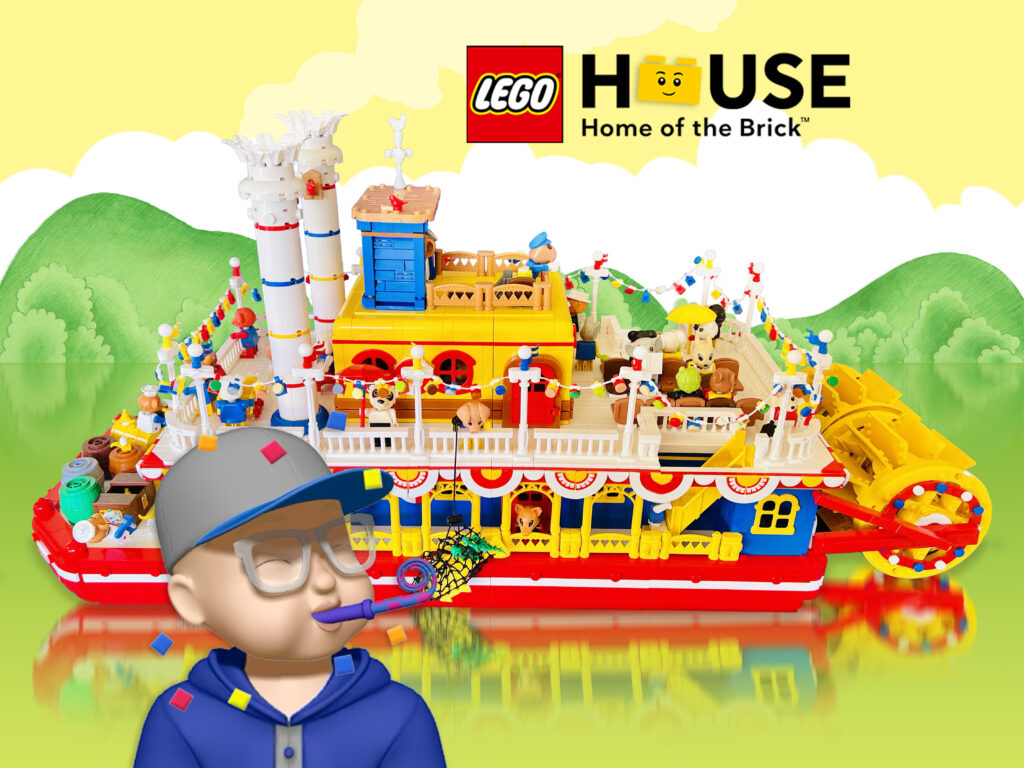
‘Made of Fabuland’ Copyright © Stewart Lamb Cromar 2024. All rights reserved.
- ‘Welcome to Apocalypseburg!’ and vintage Fabuland product images are from BrickSet and are Copyright © The LEGO Group. All rights reserved.
- Exterior photograph of Lego House and World Explorer Green Zone are Copyright © LEGO House. All rights reserved.
- ‘The World Explorer Ship’ photograph provided by Stuart Harris.
- ‘The Steampunk Submarine’ is Copyright © Warren Elsmore Ltd. All rights reserved.
- ‘Spirit of Peoria.jpg’ by ZcarstvnzRyan.harms, CC BY-SA 4.0, via Wikimedia Commons.
- ‘Maid of the Loch side.JPG’ by Rosser1954, Public domain, via Wikimedia Commons.
- Some interior Lego House photos kindly provided by Manu Schwendener (manuschwendener.ch).
- ‘Akitsu Ferry’ by 妖精書士 – 投稿者自身による著作物, CC 表示-継承 3.0.
- ‘Sazanami Osakikamishimatown.jpg’ by Olegushka, CC BY-SA 4.0, via Wikimedia Commons.
7.1) Disclaimer
Please note this blog and its resources are a personal record of my own experiences. They have not been supplied, edited or verified by any individuals from the LEGO Group.
This article is not affiliated or endorsed by the LEGO House or the LEGO Group. LEGO®, the LEGO logo, the LEGO House logo and the Minifigure are trademarks and copyrights of the LEGO Group.
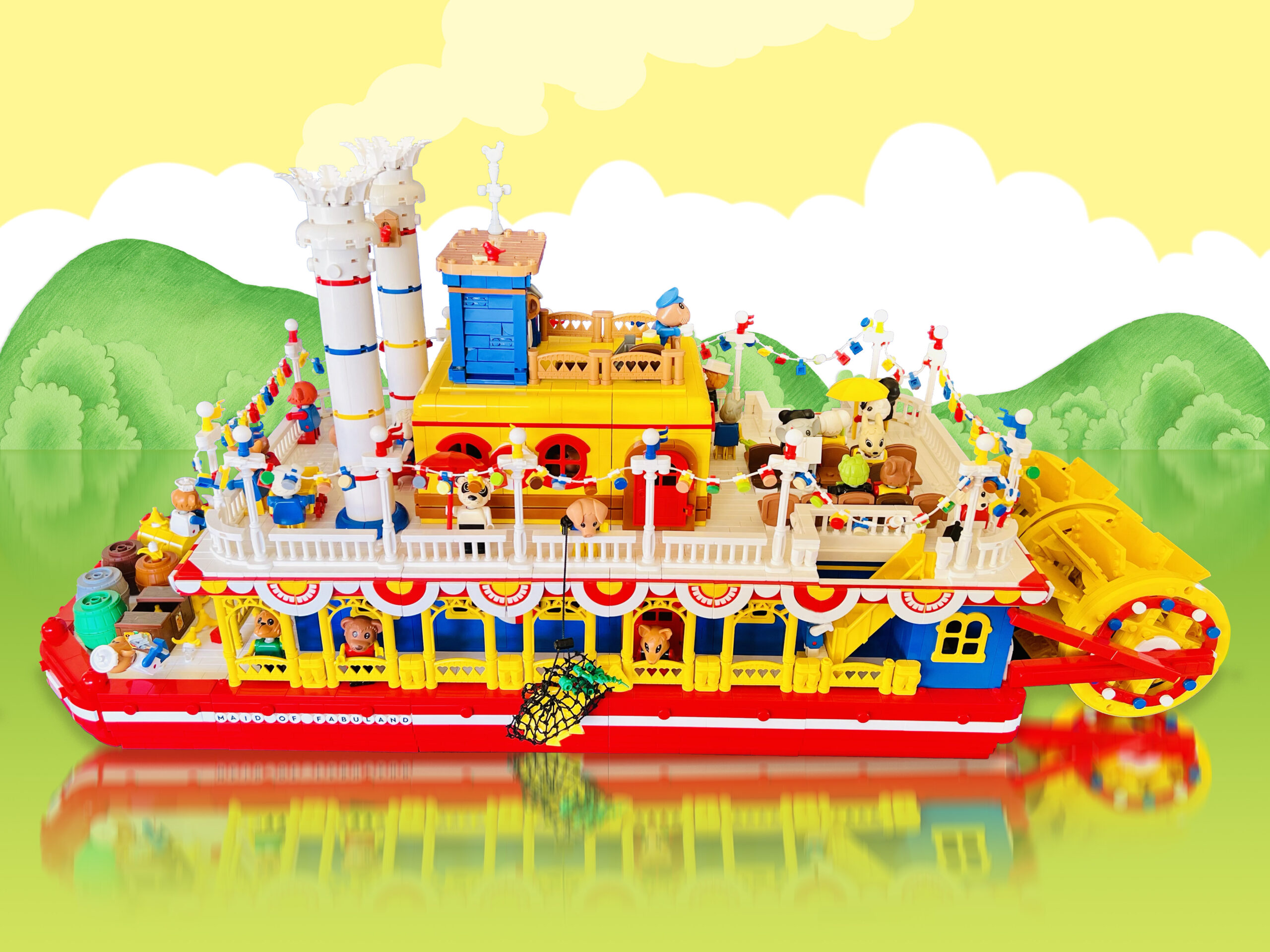
Comments
8 responses to “Maid of Fabuland”
A brilliant read and interesting insight into the commission and build process. Loved reading about your research.
Thanks for letting me know, I’m so glad you enjoyed reading it! I was keen to document things whilst they were still fresh.
Really enjoyed reading this. I am so impressed with all the research you did on the Paddle Steam Boats. You should be very proud of this beautiful work!
Cheers Lou! It was great fun finding out about these ships, especially with help from Steven. Thank you, I’m glad you like her too!
Absolutely loved seeing your beautiful build and meeting you in person at Lego House! Reading the backstory and concept/design/build process was so fun! Massive congratulations and thank you so much for sharing this wonderful build with the Lego world!! ❤️
Thank you so much Jessica. I’m so glad we got the opportunity to meet too, was a perfect day! ❤️💛💙
I had no idea this was commissioned until someone pointed it out the other day. I can’t imagine the pressure you felt on the build to get it right.
Of course I would never have doubted your abilities. Your Fabulisation skills to turn almost any theme into a Fabuland one is astounding. I don’t think there is another builder in the world with your skill in that land and you are an incredibly talented builder even when not Fabulanding!
You deserve all the praise in the LEGO world for what you achieved especially considering your challenges.
Aww Doug, your lovely comment really touched me, I had to go share it with my mum.
Thank you for the praise, that’s very kind of you. It was a big project for me, but I was keen to push myself and see what I could still achieve. I learned so many new things with this build that I can’t wait to take forward to my next.
It makes me happy to know this model has brought enjoyment to others. God bless all who sail on her!
Best wishes, Stewart ❤️💛💙
P.S. Love the term ‘Fabulisation’, gonna borrow that!